THE BEST OF BELEM
Belém is a wonderful charming district within Lisbon, located alongside the Tagus River. There are so many beautiful landmarks here I am sure you will be familiar with many of them, ever Googled Lisbon? then you definitely will recognise many of those mentioned in this article.
The most well-known landmark is probably the 16th Century Belém Tower, however my favourite landmark is the unbelievably impressive Gothic Jerónimos Monastery. You will definitely have heard of the Pastéis de Belém patisserie which of course is famous for its Pastels de Nata or custard tarts and always has a long queue which supports the idea that they are the best you will get in Lisbon. According to the Pastéis de Belém website they began making the original Pastéis de Belém in 1837 and they follow:
“… an ancient recipe from the Mosteiro dos Jerónimos. That secret recipe is recreated every day in our bakery, by hand, using only traditional methods.”
Having tried a couple of their famous Pastels de Nata, I can confirm they are delicious!
Anyway… back to the Belém, back to the beginning - How do you get there from Lisbon centre? Where to visit along the way? and much more, keep reading.
Getting to Belém
We have been to Belém many times now, on foot, on two wheels (scooters and bicycles) and via four wheels in an Uber. You can also taxi, bus or train (direction Cascais) or tram (no 15) to Belém. So, as you can see, there are plenty of options available.
How you get to Belém is of course up to you. If you have time, good weather and want some fresh air and exercise then it is a flat walk from the centre of Lisbon to Belém. For reference, it is approx 7kms from Lisbon’s Arco da Rua Augusta to Beléms Mosteiro dos Jerónimos.
You can also ride an electric bike or e-scooter along the same route that you would walk, taking advantage of the bicycle lanes available - just watch out for the cobbled sections!
Taking the Tagus River Route to Belém
The main advantage of following the Tagus river route to Belém (and not taking a train, tram, bus etc.) is that you can take advantage of the sights along the way.
On a clear day you will be rewarded with beautiful views of the 25 de Abril Bridge and the Statue of Cristo Rei on the opposite side of the Tagus river.
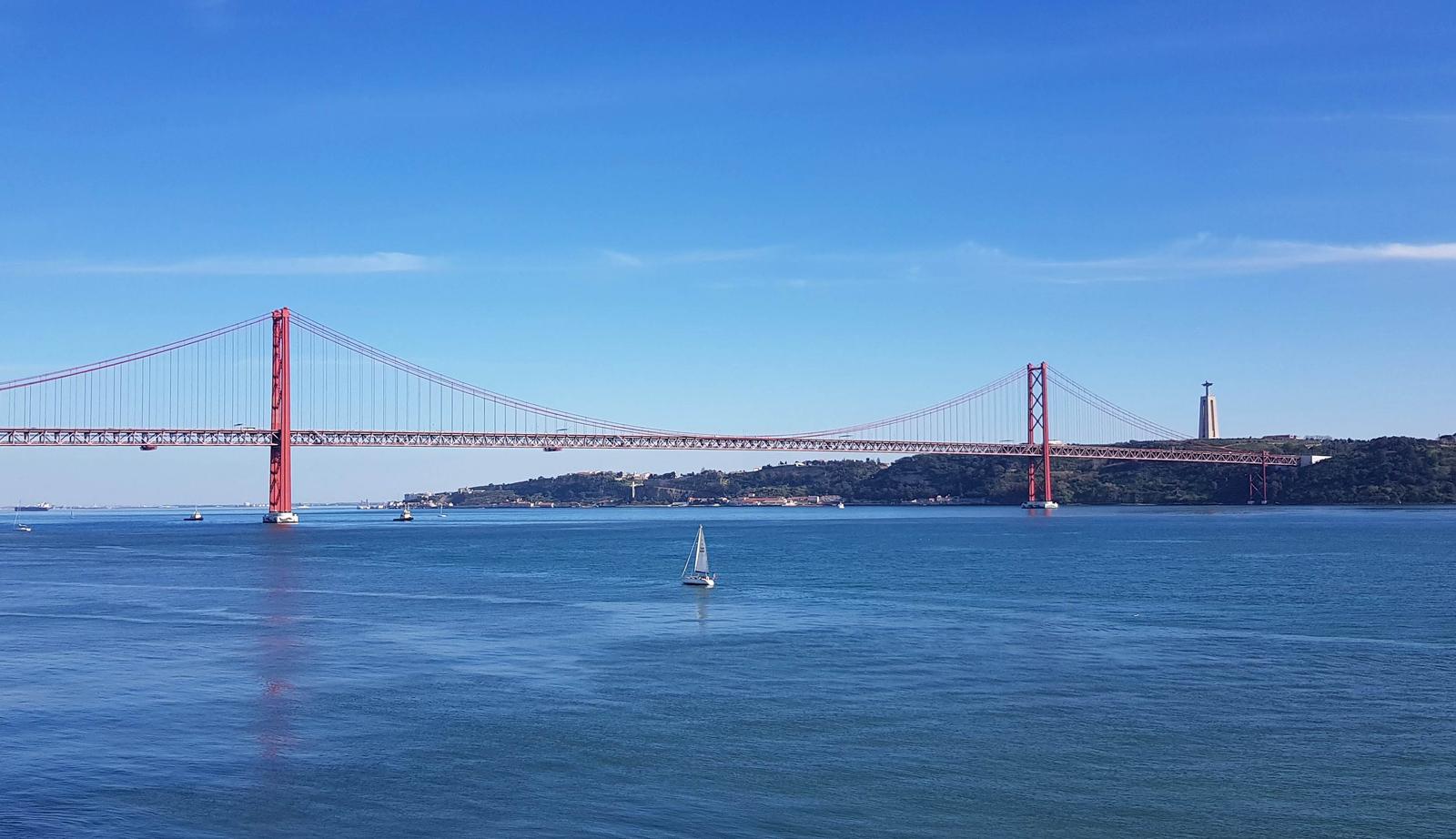
You will also get to walk directly underneath Lisbon’s version of San Francisco’s Golden Gate Bridge - the 25 de Abril Bridge and get some great photos of it too. The 25 de Abril Bridge is very impressive with a central span of more than one kilometre and a total length of 2.3kms.
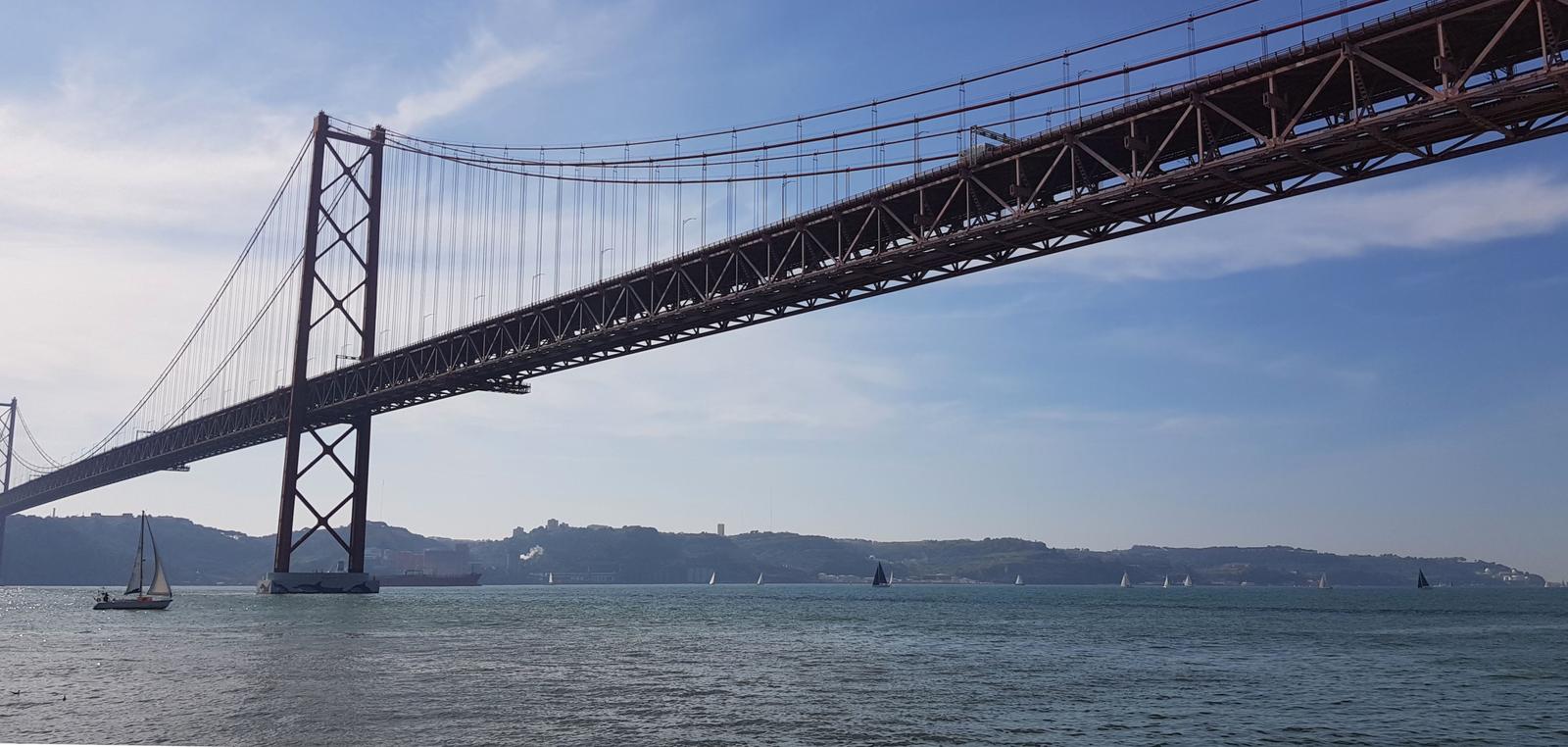
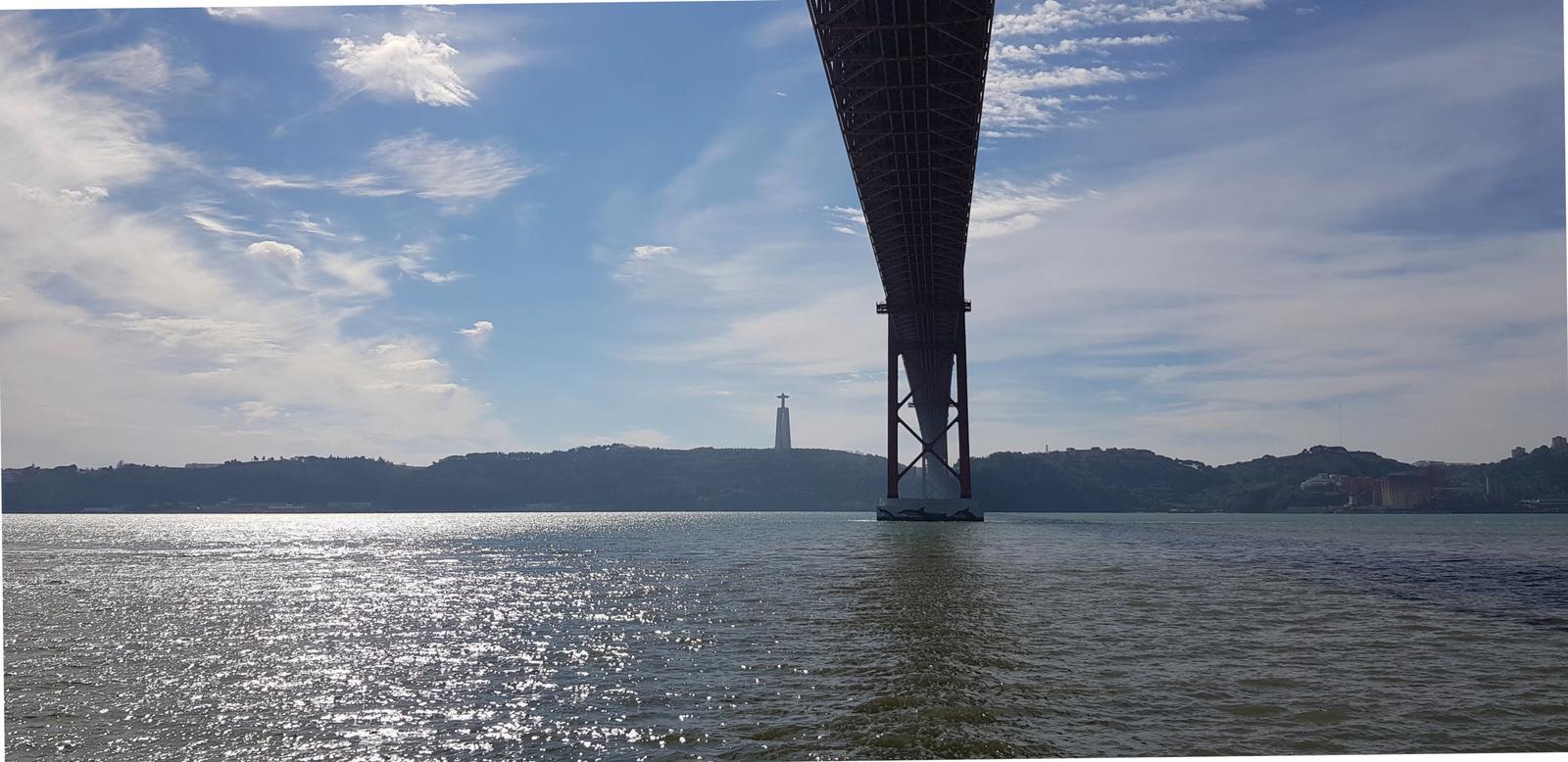
Another advantage of taking the Tagus route is that there are some lovely cafes and restaurants along the way, just before you walk under the bridge, at the Doca de Recreio de Santo Amaro for example. This is about the 4km point so an ideal place to rest up before the second half of your walk.
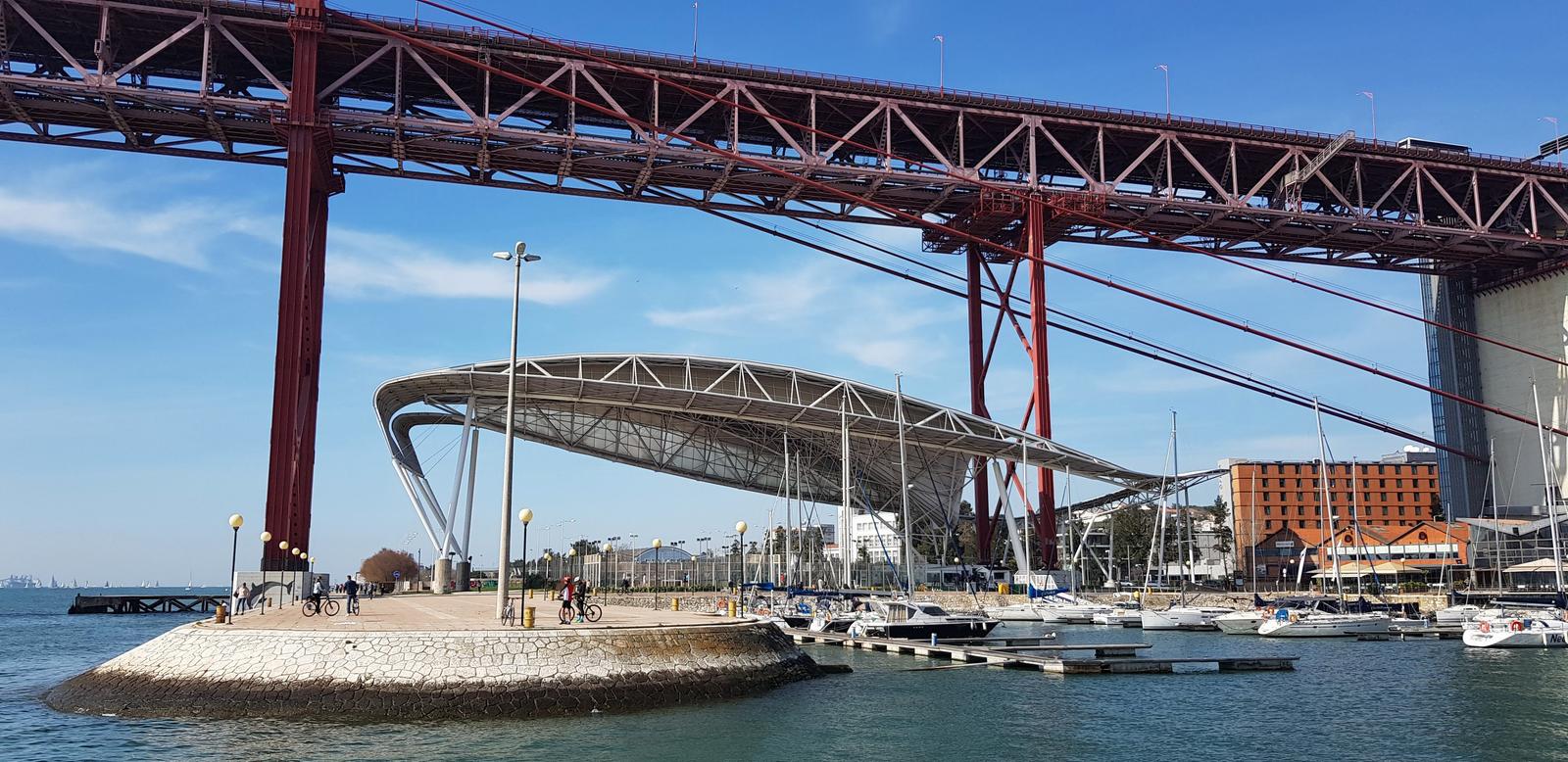
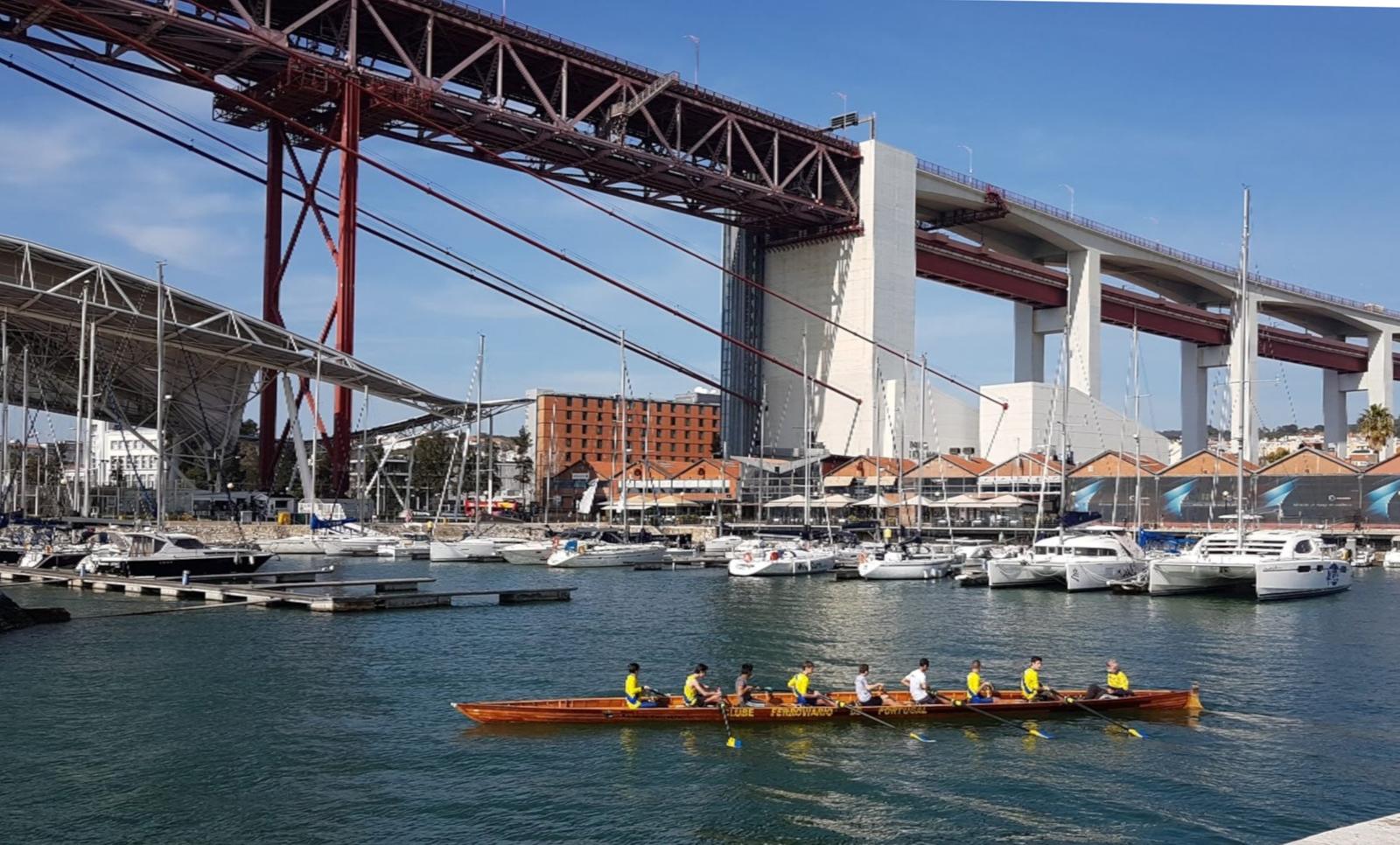
As you get closer to Belém there are also some food and drink trailers/carts with seating which are a great place to stop, relax and do some people watching.

Places to Visit along the Tagus River
There are a number of Museums and other attractions along the Tagus river or close-by, that you could also visit on your walk to Belém. Obviously you would not be visiting them all in one day, but take a look and perhaps one or two will stand out for you!
Firstly, there is the Museu Nacional de Arte Antiga MNAA located at Rua das Janelas Verdes, 1249-017 Lisboa. Visiting the MNAA would mean a short detour from the riverside.
The MNAA is:
“… home to the most important Portuguese public collection of art, ranging from paintings to sculpture, and gold and silverware, as well as decorative arts from Europe, Africa and the Far East. Comprising over 40,000 items, the MNAA collection has the largest number of works classified by the State as “national treasures”. In its various sections, it also has a number of major works of art in the context of the world artistic heritage.”
Next, adjacent to the river is the Museu do Oriente where you will find Portuguese and Asian art displayed and which represent:
“… the highest demonstration of historical encounters between the West and the East.”
The collections in the Museu do Oriente:
“… bring together the cultural traditions of the whole of Asia are the demonstration of their richness, their plurality and their genius that we want to be better known in Portugal and in Europe.”
Next up is the Museum Art Architecture Technology MAAT, Av. Brasília, Central Tejo 1300-598 Lisboa. There are two parts to this Museum. The new building which is a piece art in its own right. You will definitely know this building when you see it, it is a stunning white ceramic tiled structure that rises up before you, beautiful curved lines and angles and not forgetting the great viewing deck on the roof.
“The new building rises on the river front with an architectural narrative that is sensitive to the city’s cultural heritage and future, offering, among other features, a pedestrian roof that offers a privileged view of Lisbon and the Tagus, and which immediately became an iconic location.”(https://www.maat.pt/en)
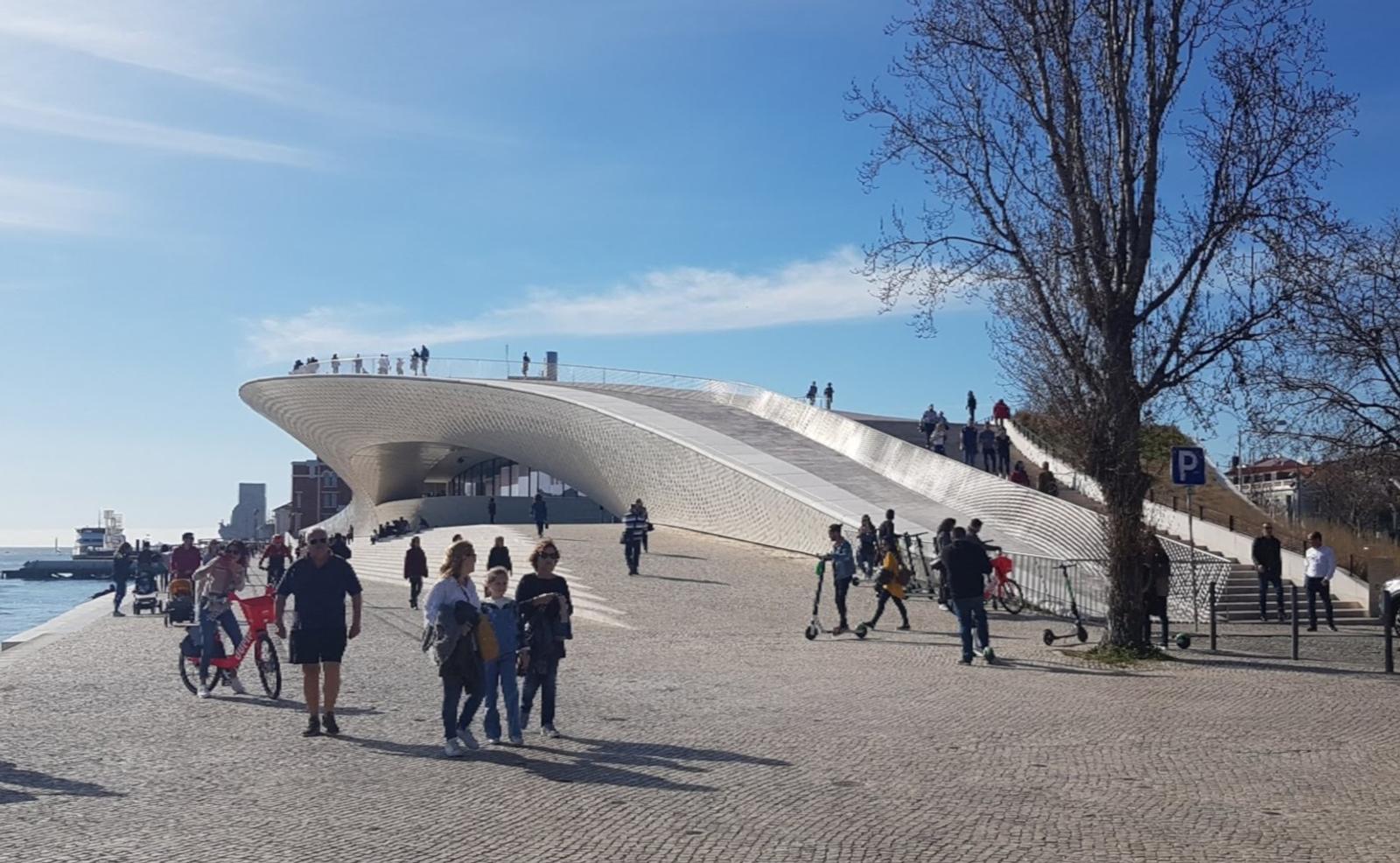
The second part of this Museum is the older but equally impressive red brick former power plant building located next to it.
You will now also be close to the Belém train station/stop and in the distance you can see the sail shaped Padrão dos Descobrimentos. Padrão dos Descobrimentos or the Monument of the Discoveries was first built in 1940 and later upgraded in 1960. The sculptures are limestone and were carved in Sintra. You can read all about it here.
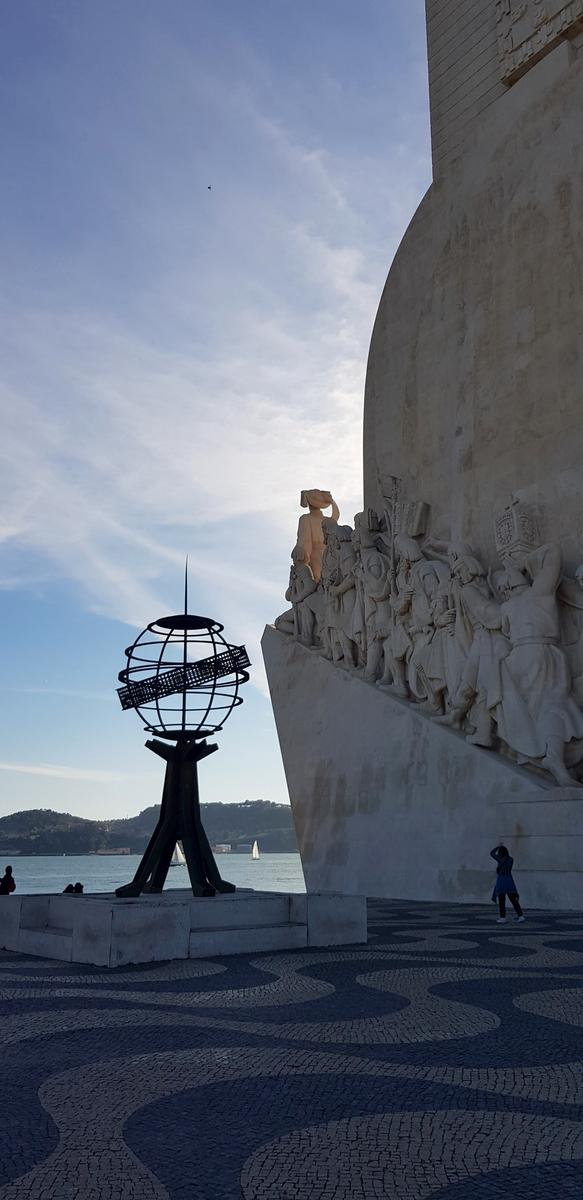
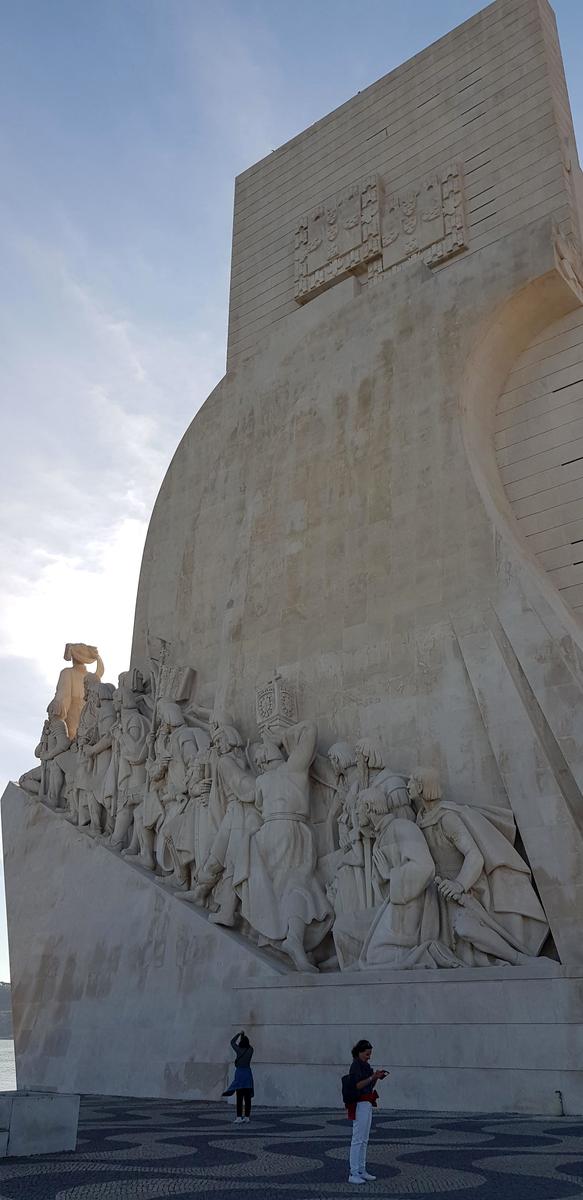
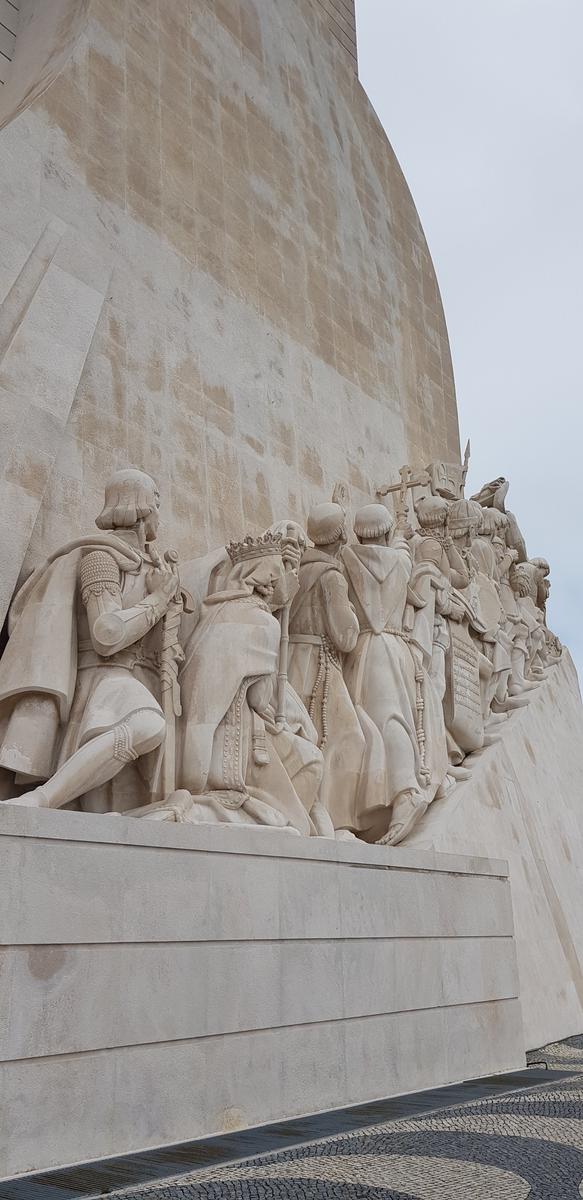
It is €6 to visit the roof of the Padrão dos Descobrimentos (via elevator) and it is well worth it for the fantastic 360’ view it offers. I particularly like the birds-eye view of the Jardim de Belém and the Jerónimos Monastery from there.
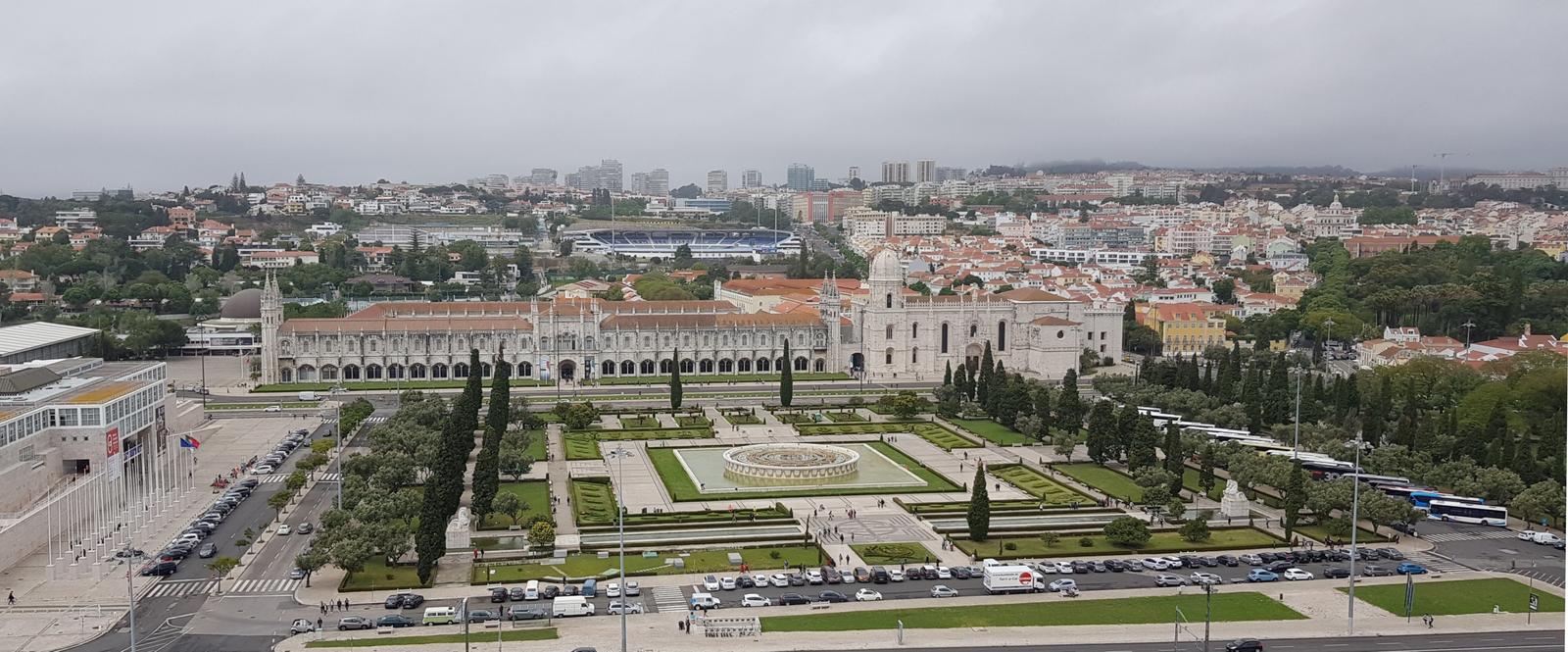
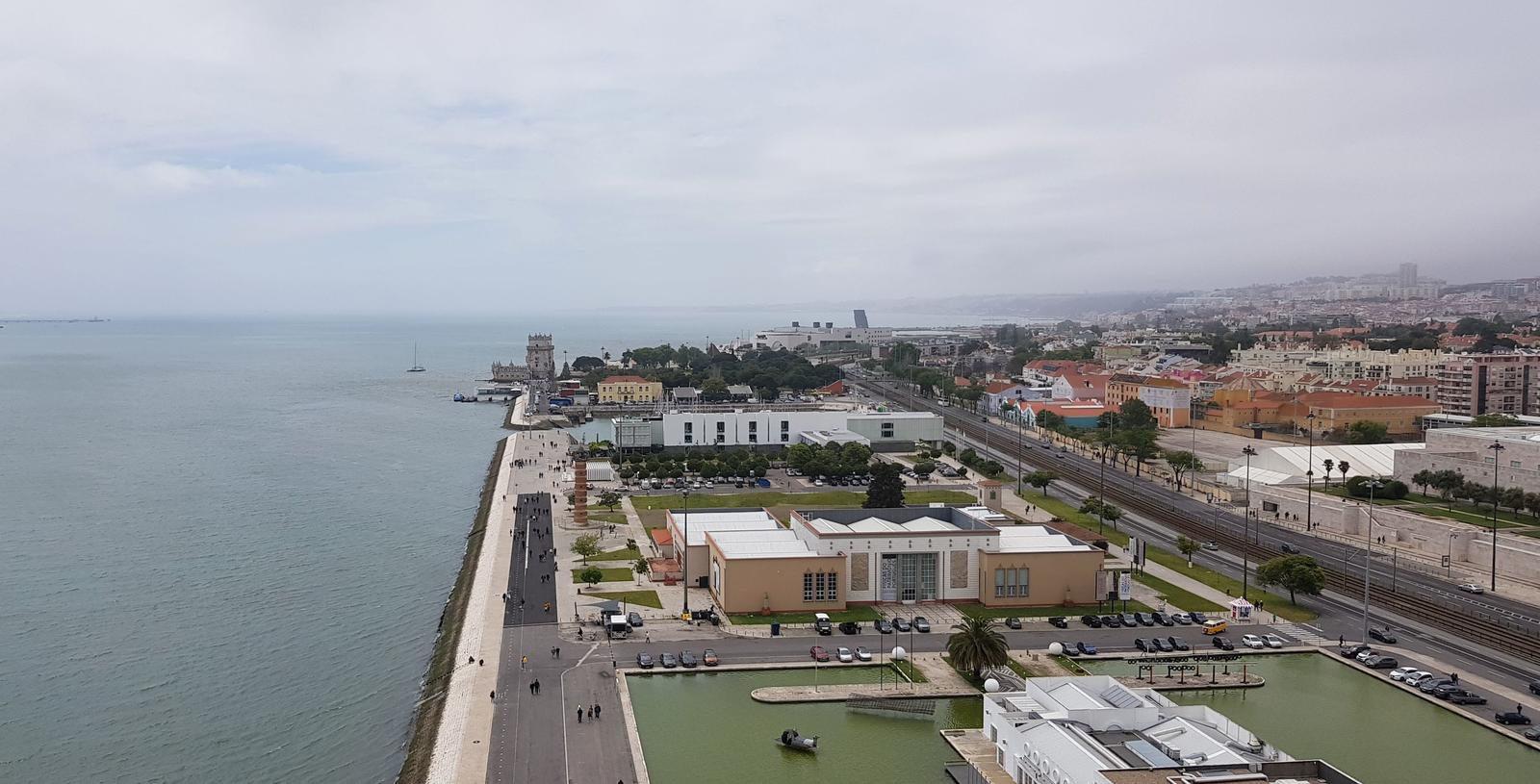
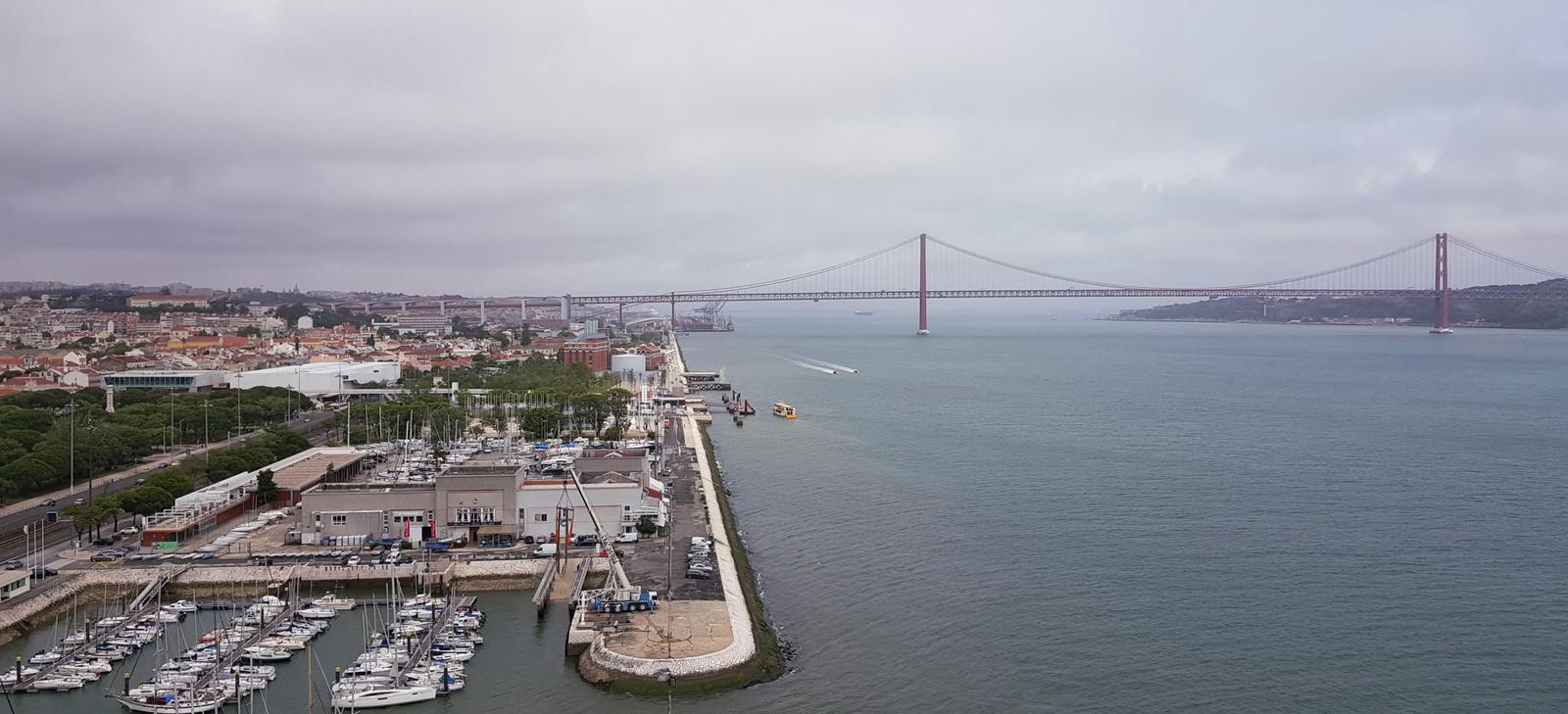
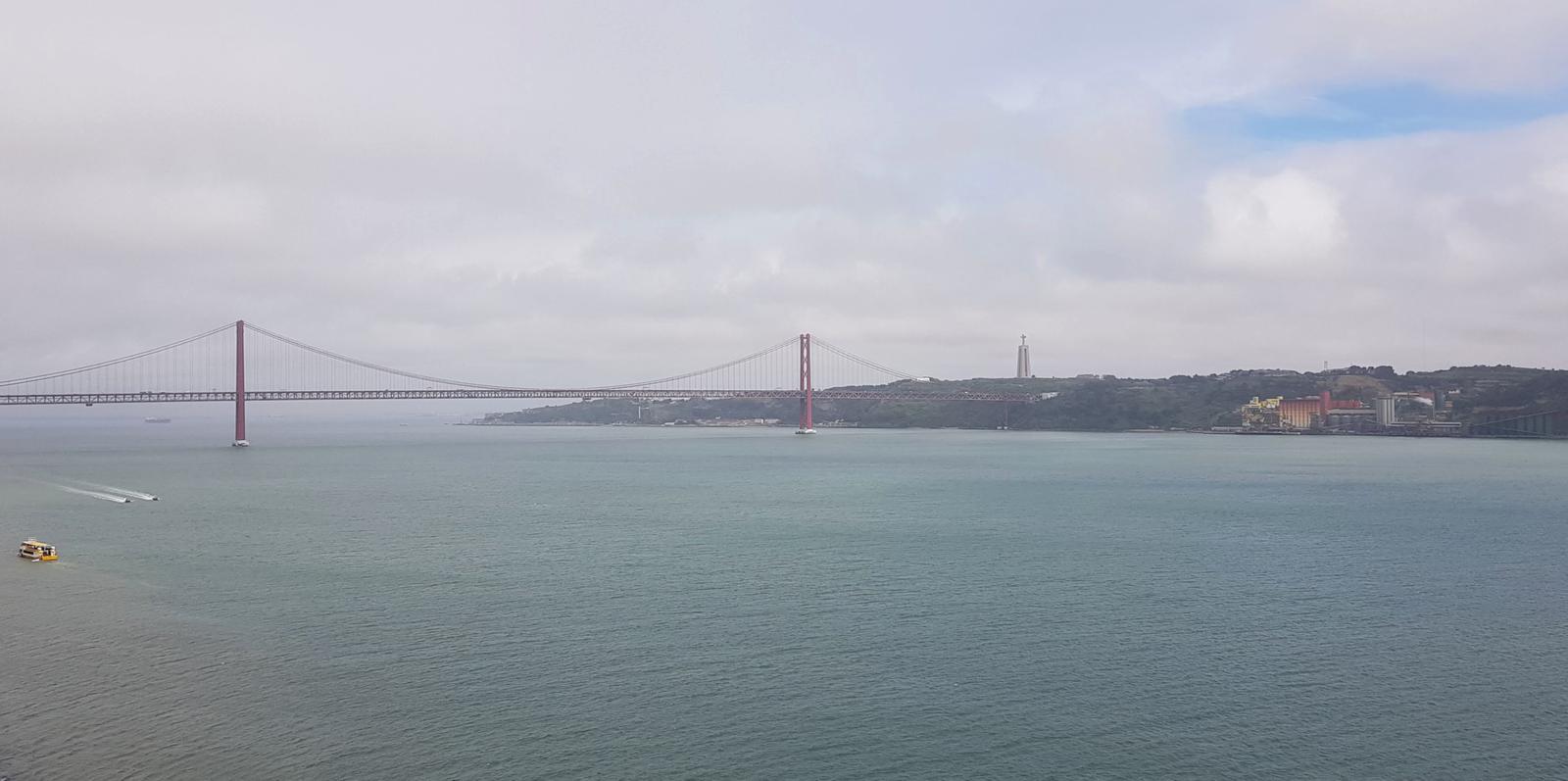
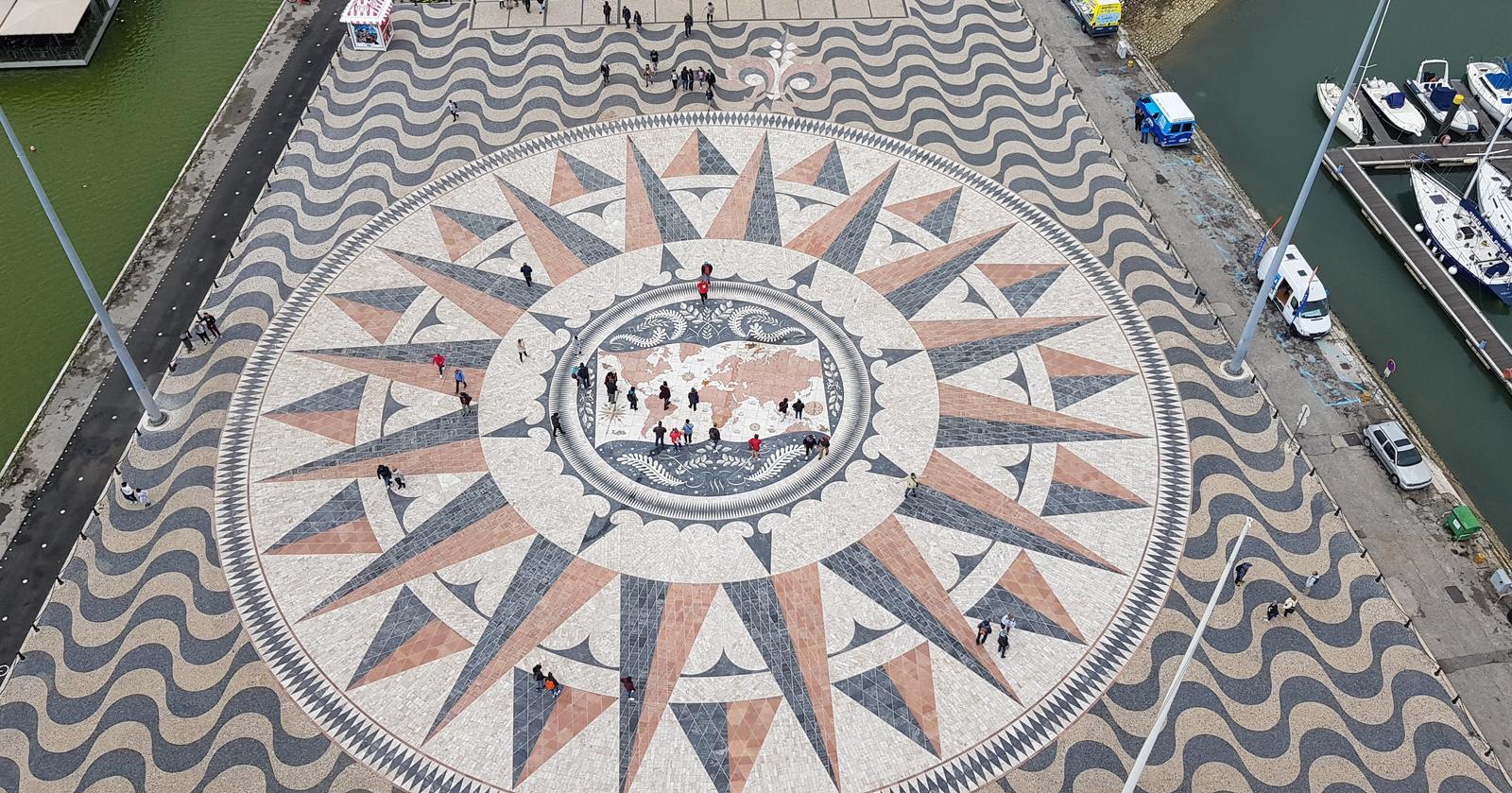
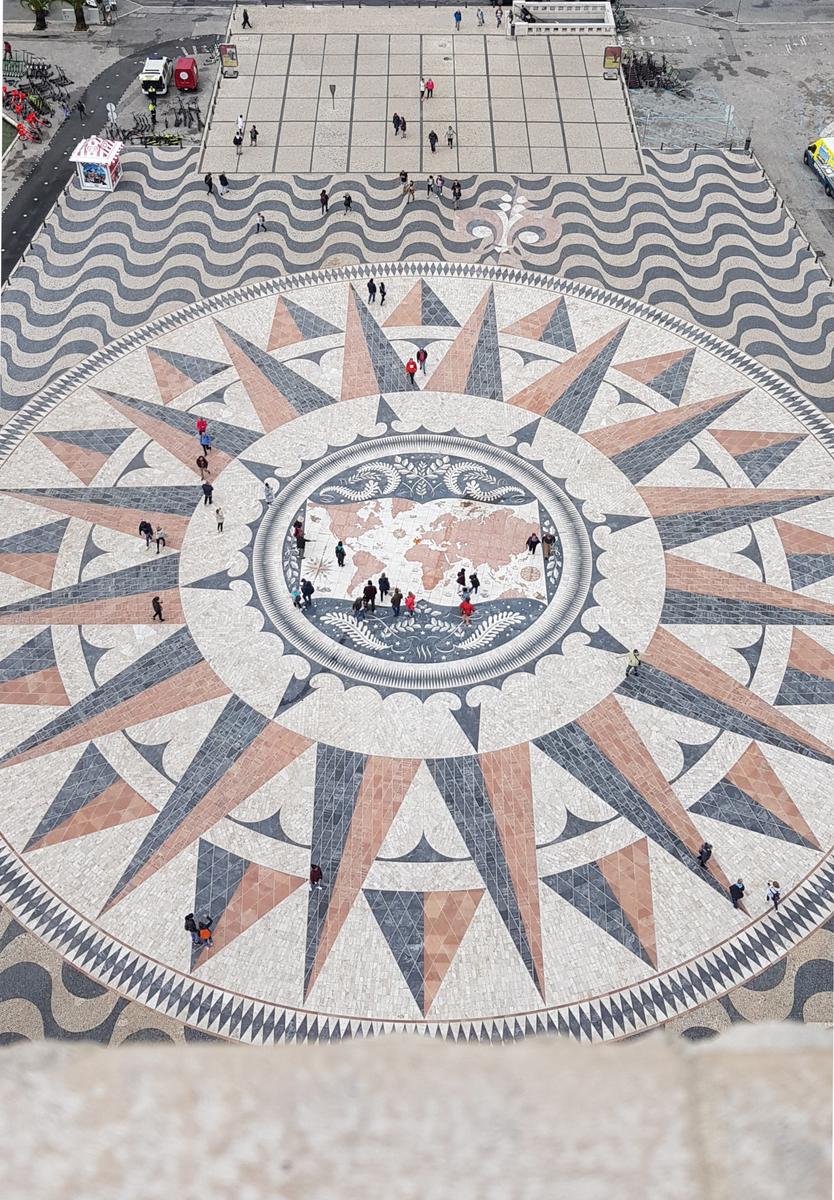
*Note: There is a underground tunnel located near the main road by the Padrão dos Descobrimentos. This tunnel will allow you to cross under the train tracks and road and emerge on the other side next to the Praça do Império.**
Further ahead you will come to Belém Tower. You can visit the Tower if you wish.
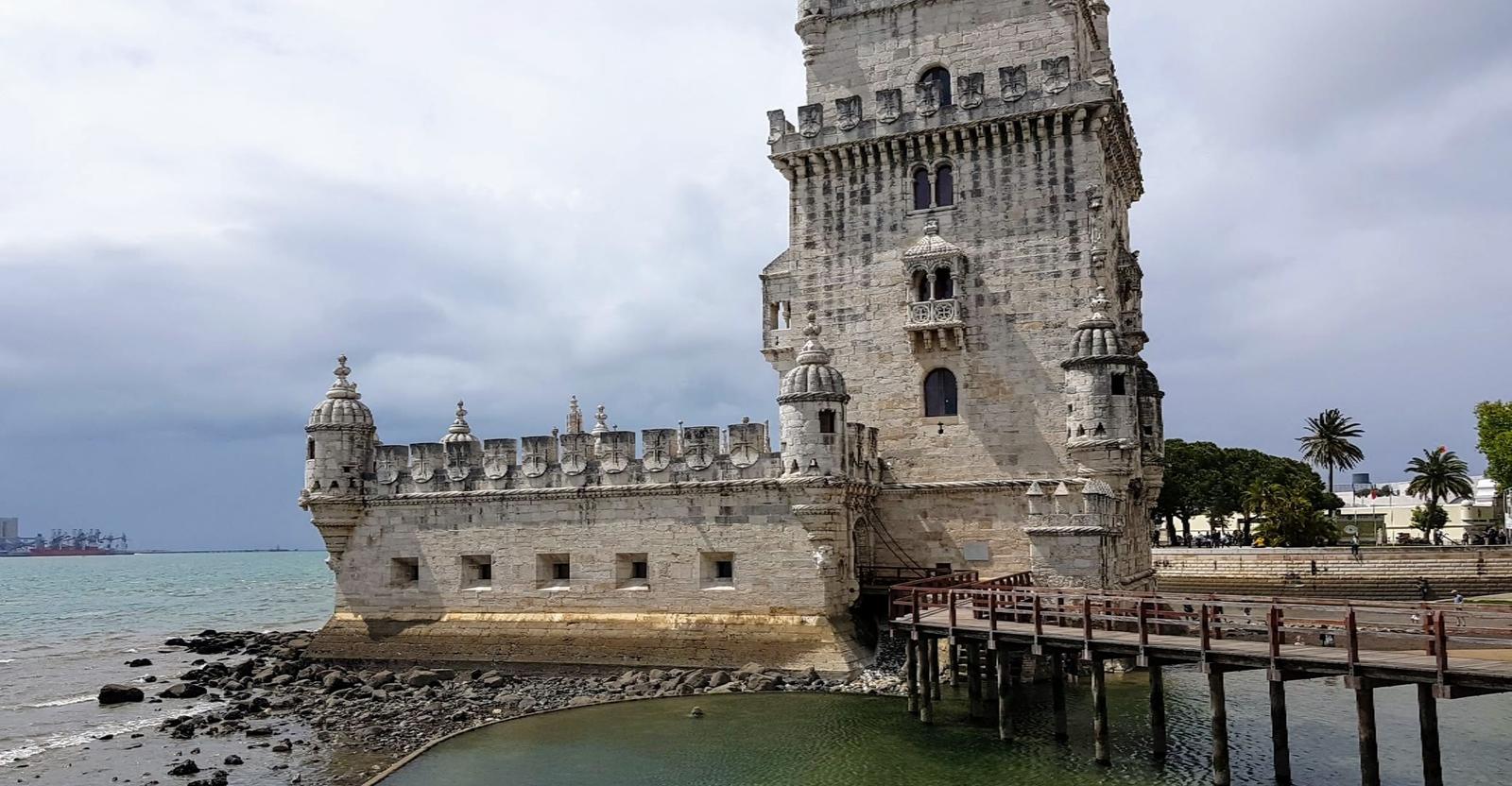
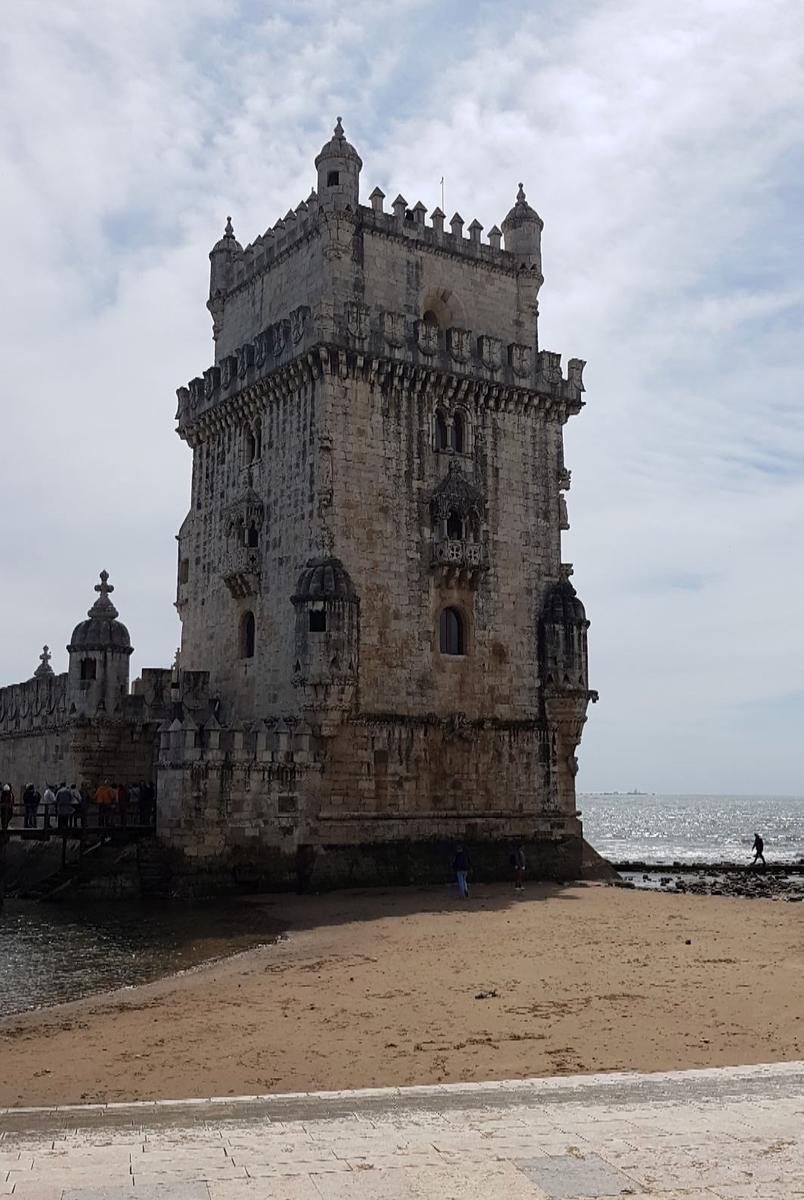
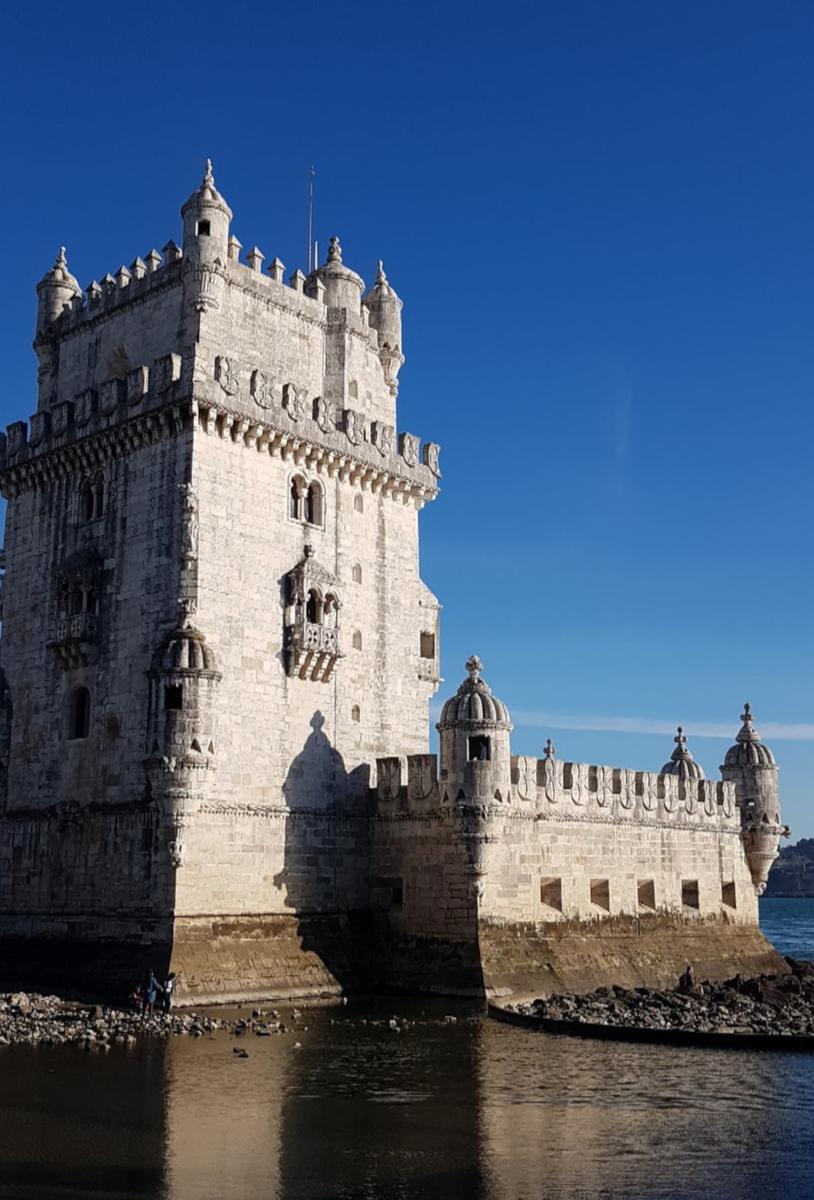
You will also see the following attractions:
-
Jardim da Torre de Belém/The Garden of Belém Tower. This is a large park that often hosts free events and is always a hub of activity. There is a Tourist Information centre located in the park also.
-
The Monumento dos Combatentes do Ultramar (Monument to the Overseas Combatant) which is:
“… dedicated to soldiers of the Portuguese army who died during the Overseas War of 1961 to 1974.”
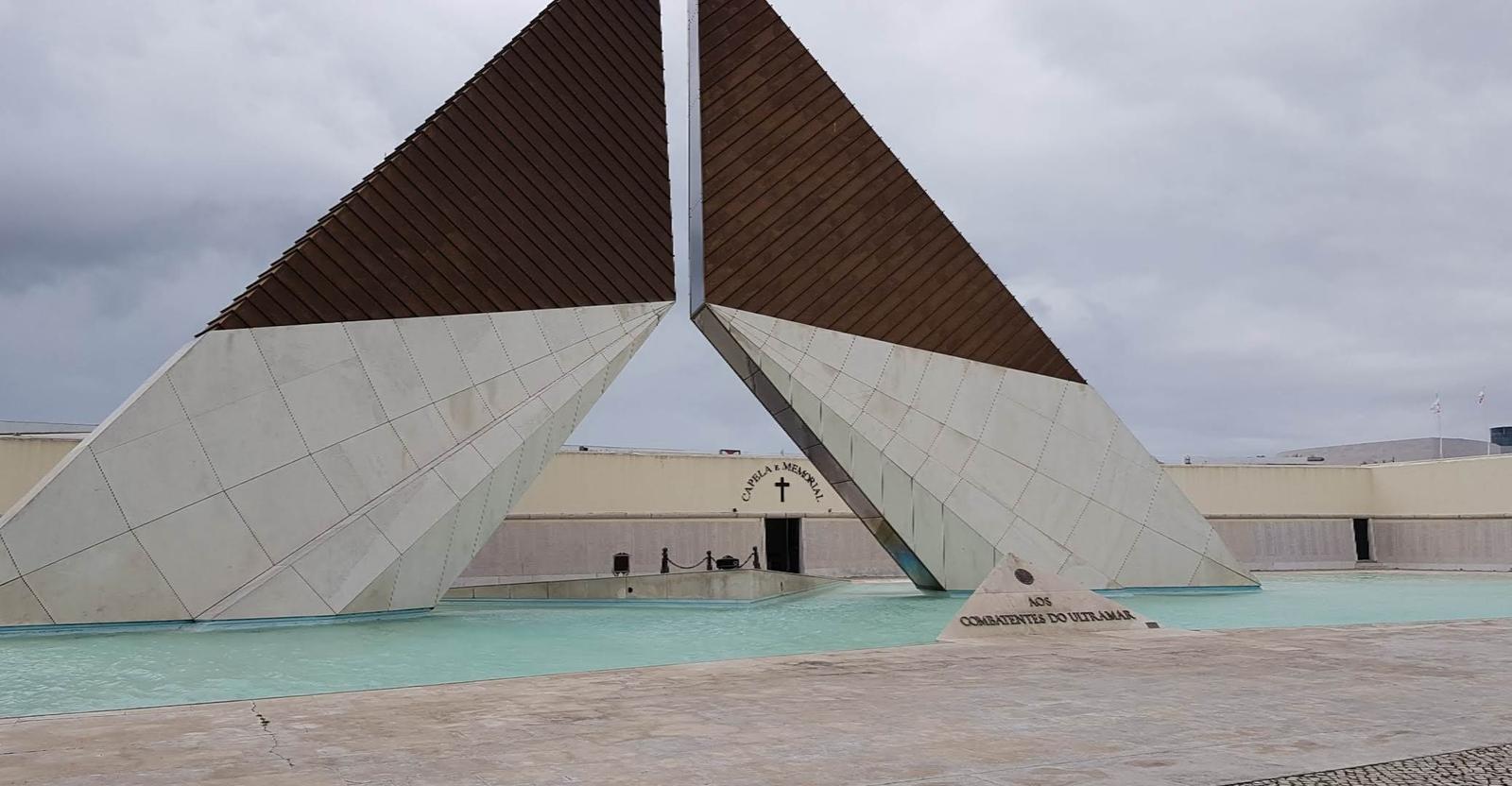
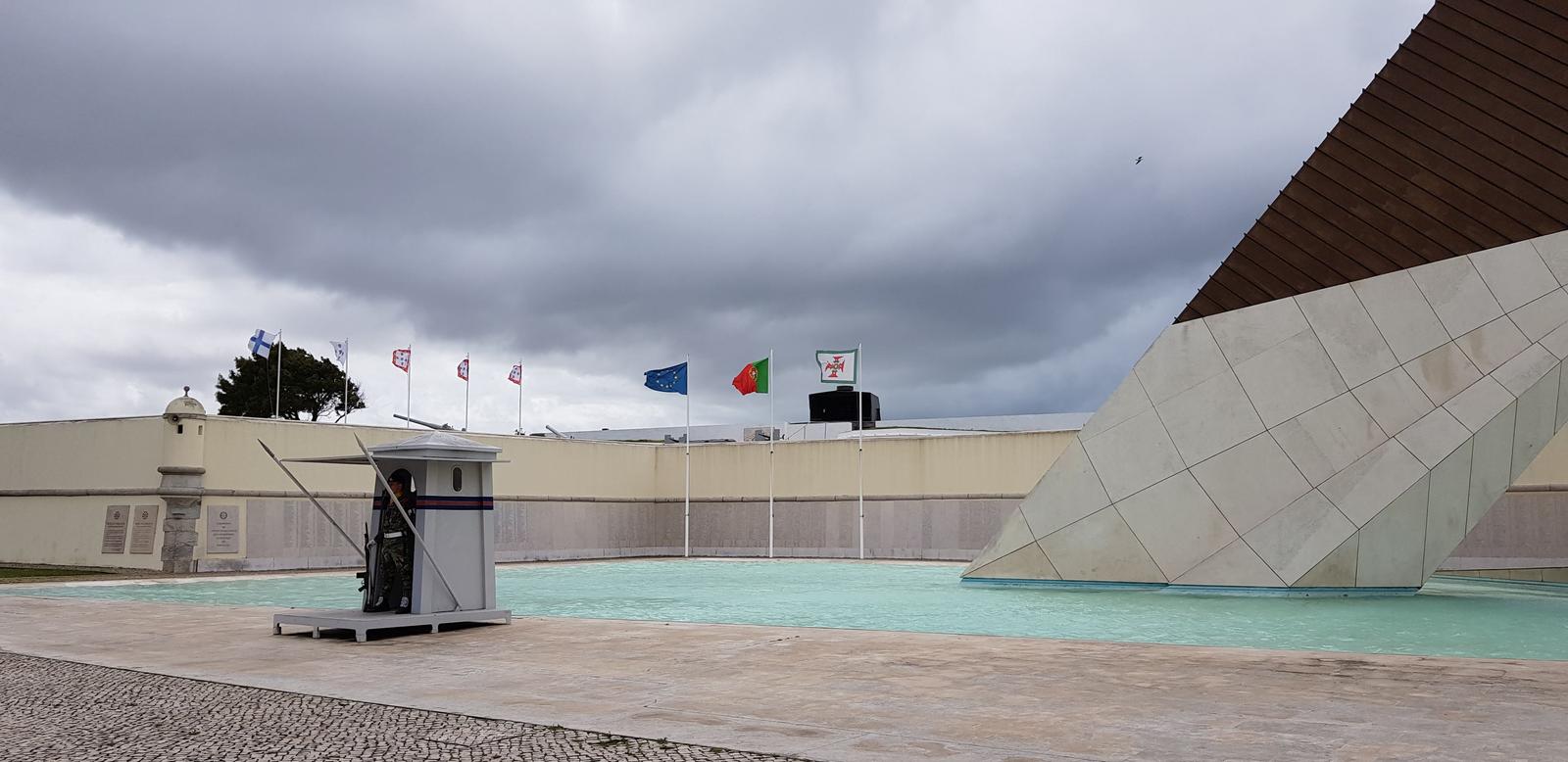
- The Museu do Combatente is next to the aforementioned memorial.
I think it is best to visit as many of these as you want to before you cross over the road and train tracks via the pedestrian bridge to the Jerónimos Monastery, Garden Vasco da Gama, Jardim de Belém, Afonso de Albuquerque Garden and Belém itself.
From the Tagus River to Belém Centre
Once you are done with the Tagus River area around Belém it is time to cross the busy road and train lines over towards the centre of Belém. There is a pedestrian bridge at the corner of the Garden of Belém Tower which is perfect.
Once you cross over the bridge, you can turn right (towards Belém centre) and follow the main road (towards Belém centre) however we prefer to keep straight once we cross the pedestrian bridge and then turn right onto Rua Praia do Bom Sucesso. It is a small narrow street but has some cute unique houses along it. You will exit from this street onto Rua Bartolomeu Dias which will bring you straight into Belém. There are some nice shops, cafes and ice cream parlours on the right side as you get closer to the Museu Nacional de Arqueologia and the Planetário Calouste Gulbenkian. We have not visited either of these attractions yet but you will find plenty of information on their websites.
If you wish to visit the Jerónimos Monastery you can buy your ticket as you walk towards it as you must purchase your ticket using the self-service machines in the National Archaeological Museum and of course you can also buy tickets to, or combination tickets for, the National Archaeological Museum and the Jerónimos Monastery at these self-service machines. For more information on tickets for the Jerónimos Monastery click here.
Entrance to the National Archaeological Museum:
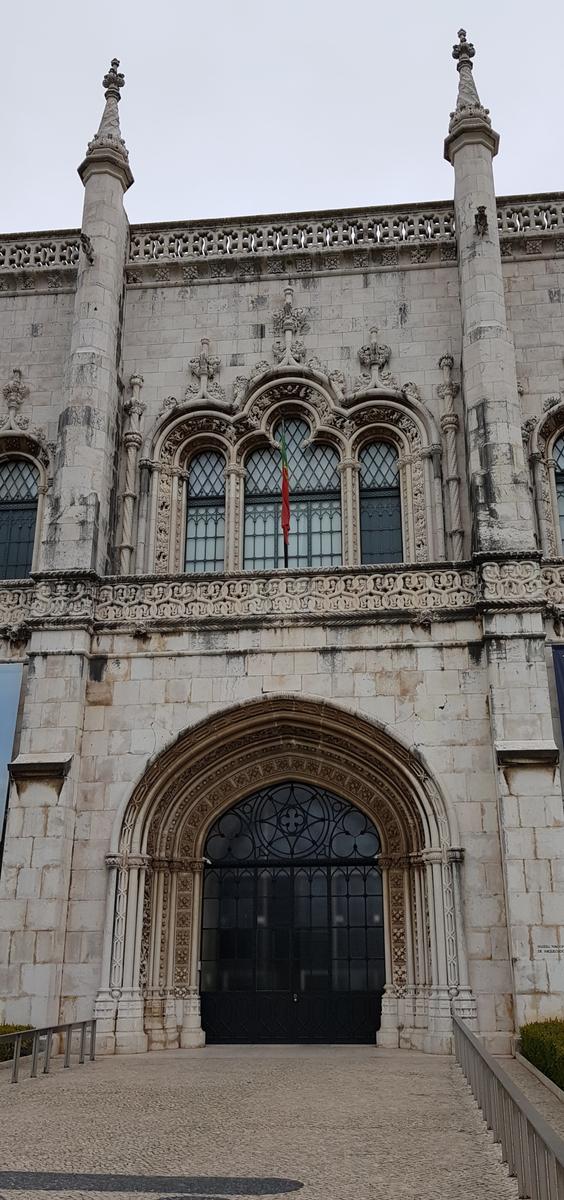
We have visited the Jerónimos Monastery and we really loved it. It features amazing gothic architecture and traditional displays of azulejos. It was hard to get good photos due to the volume of visitors but I am sure if you went early or late in the day you could avoid this.
This is the exterior of the Monastery:
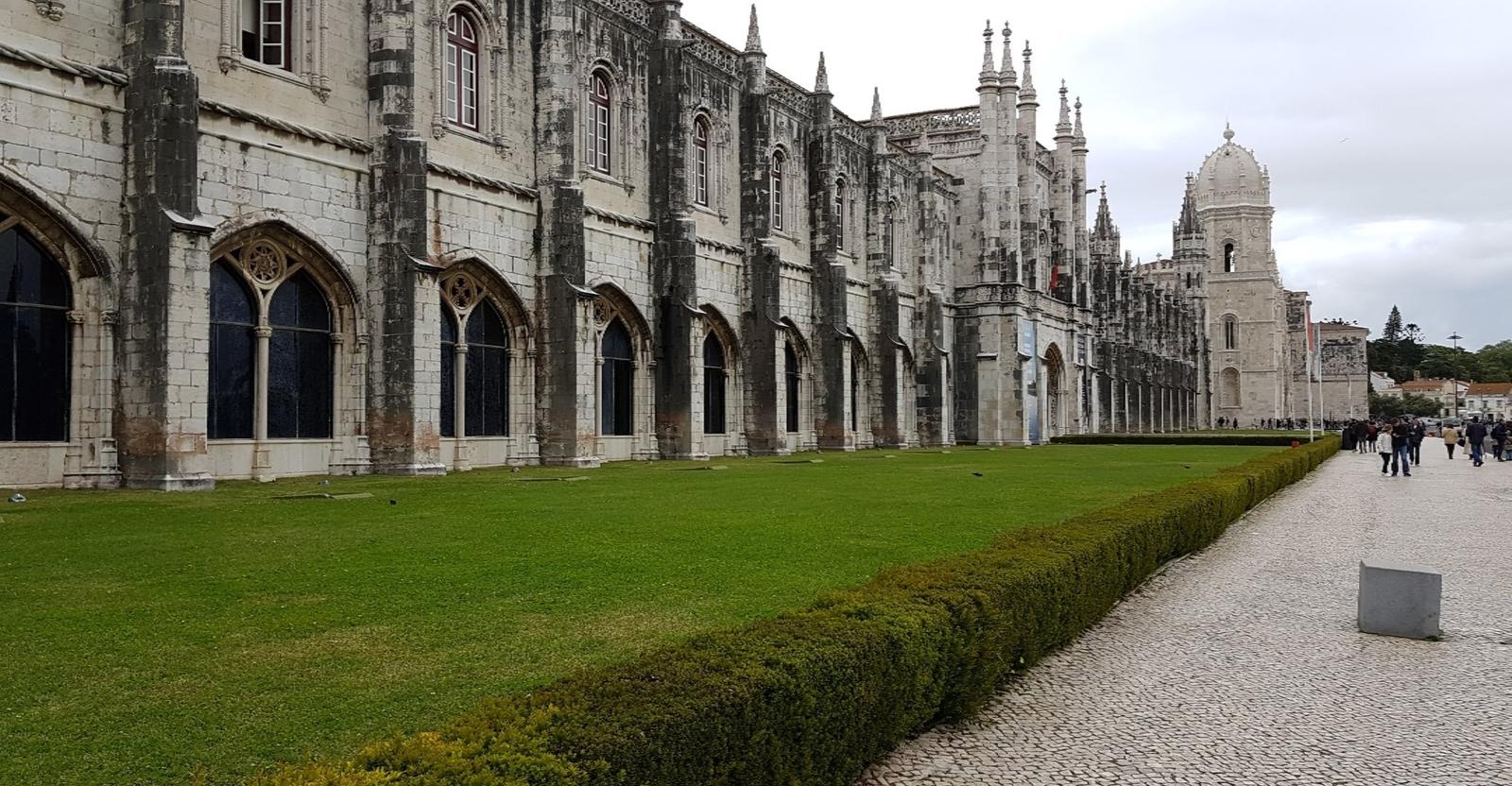
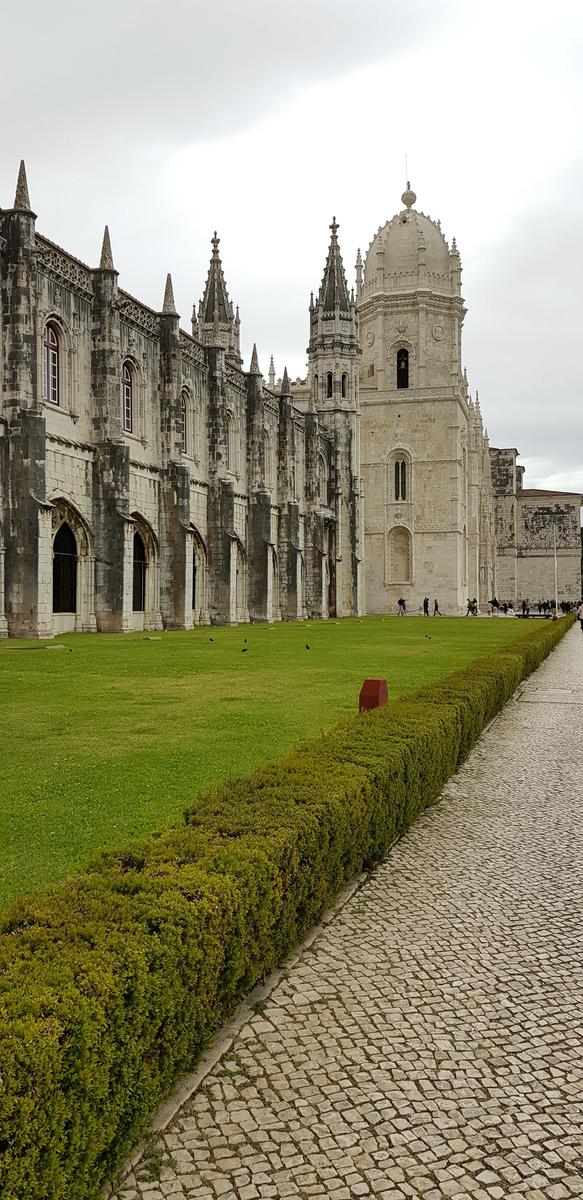
Here are some shots from inside the Monastery:
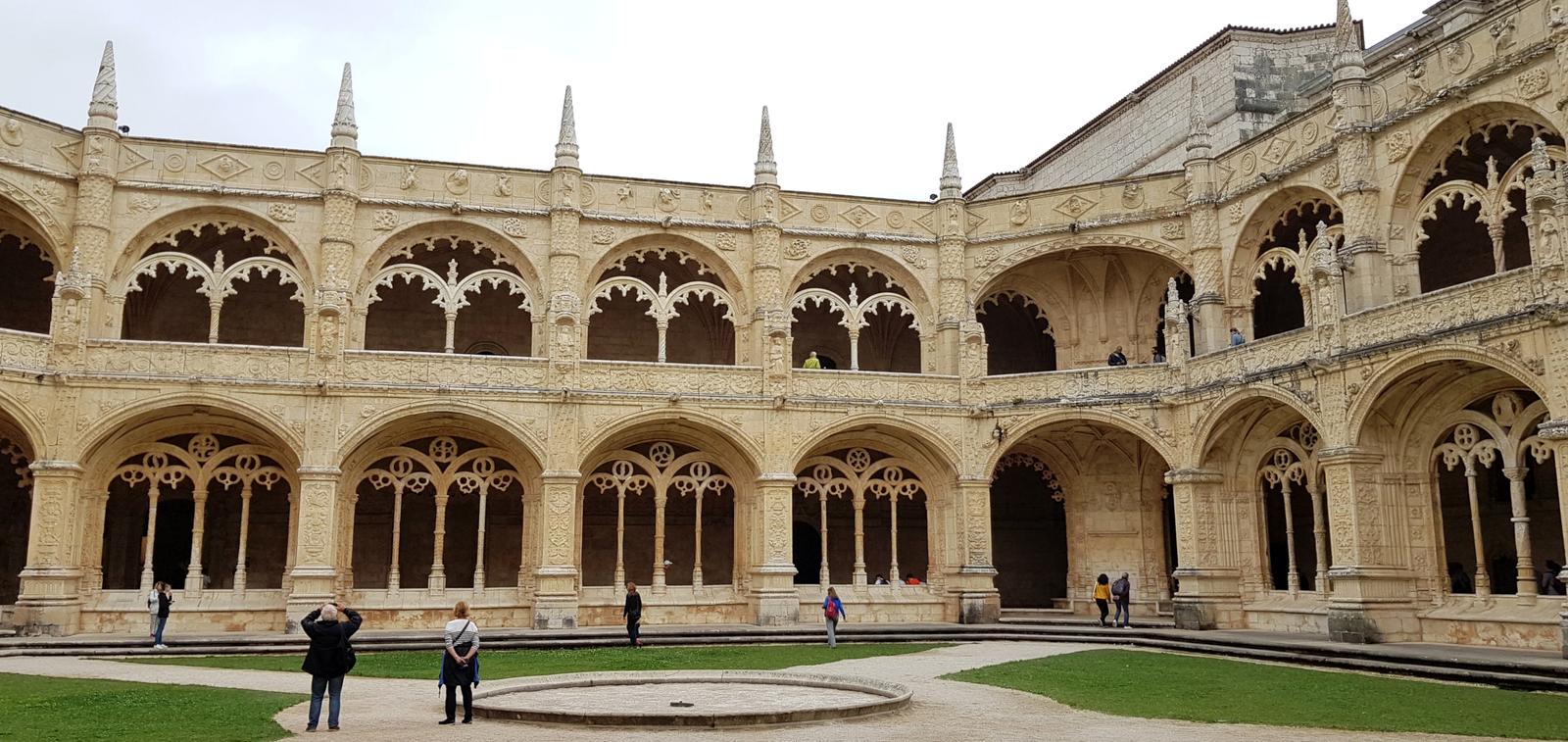
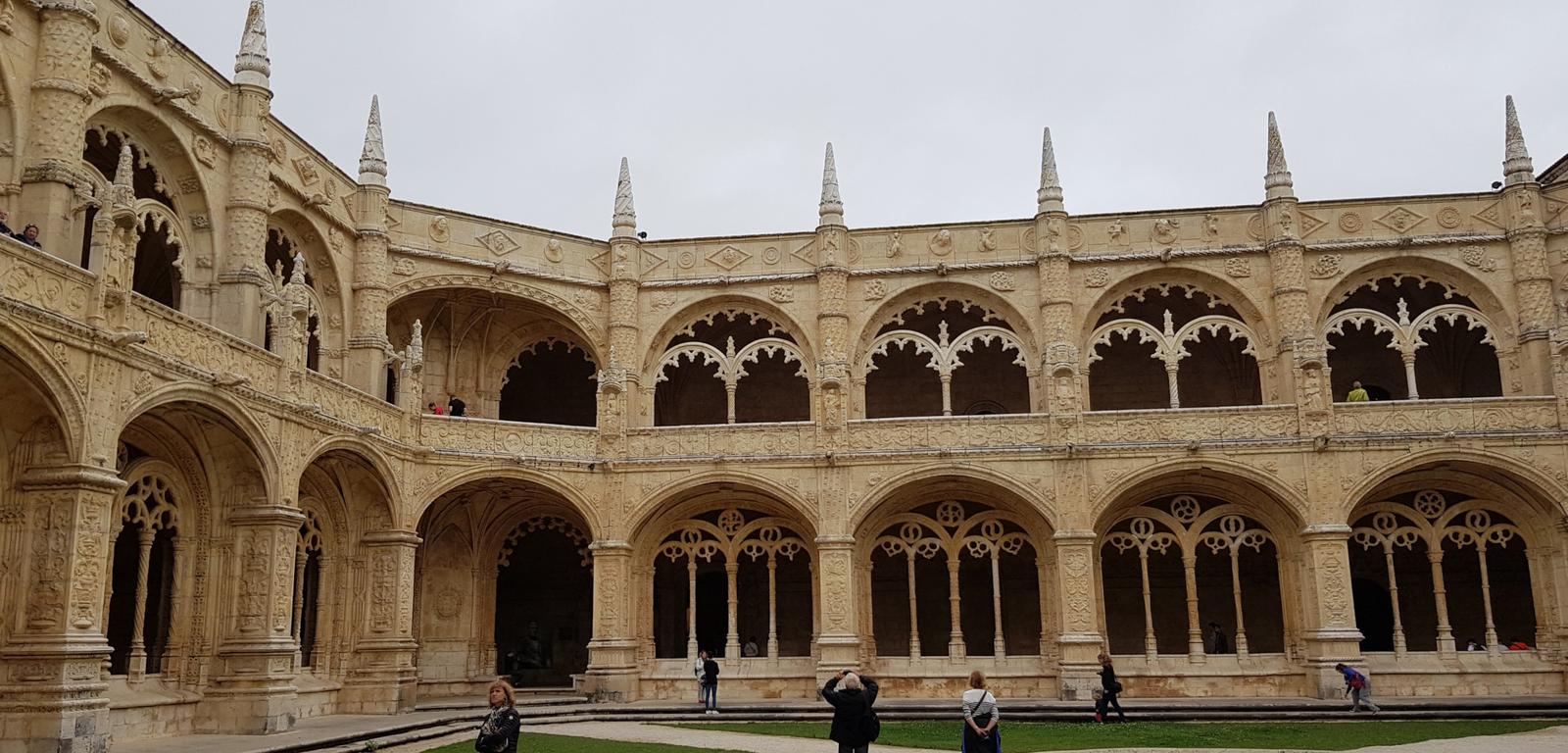
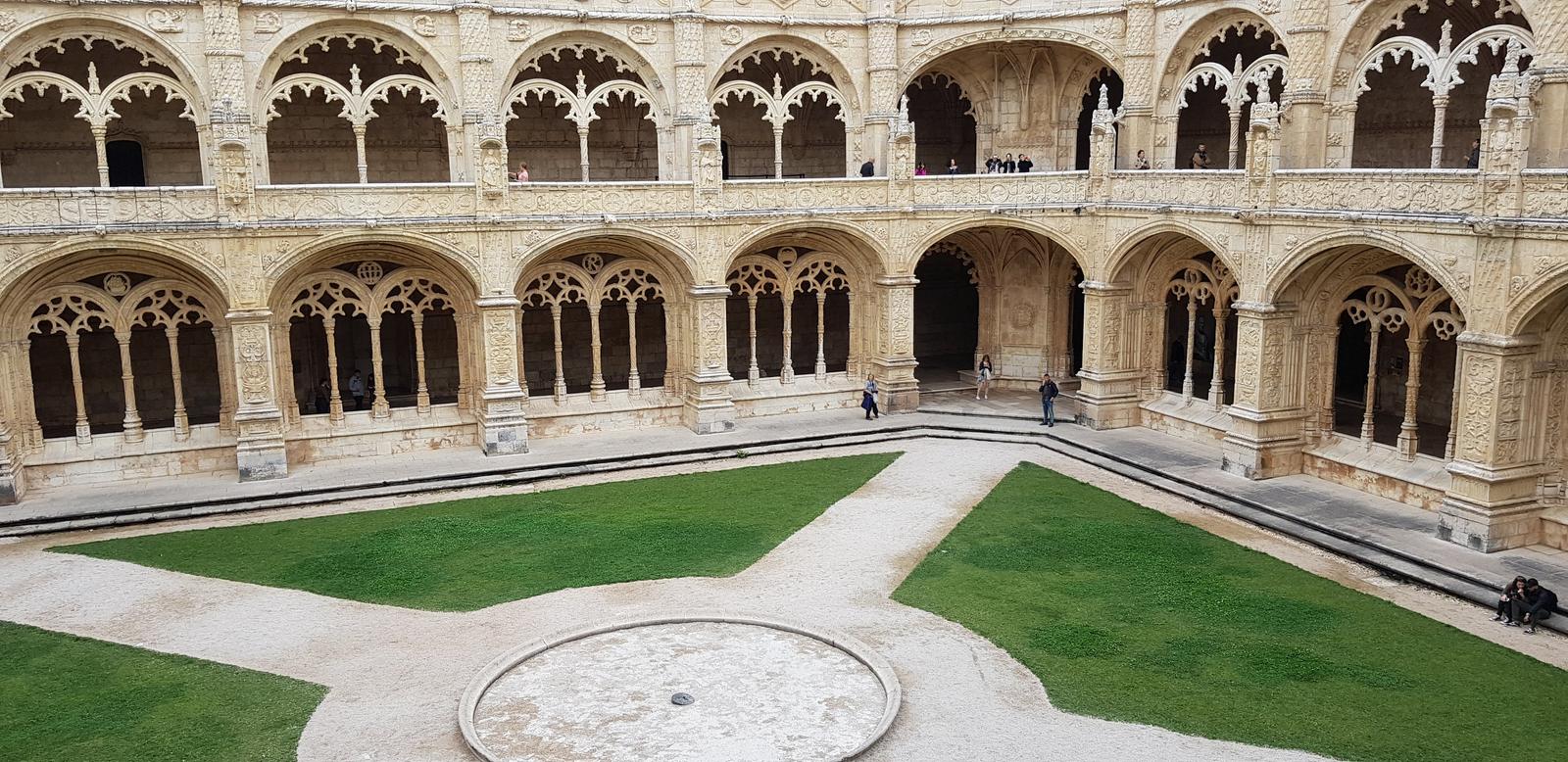
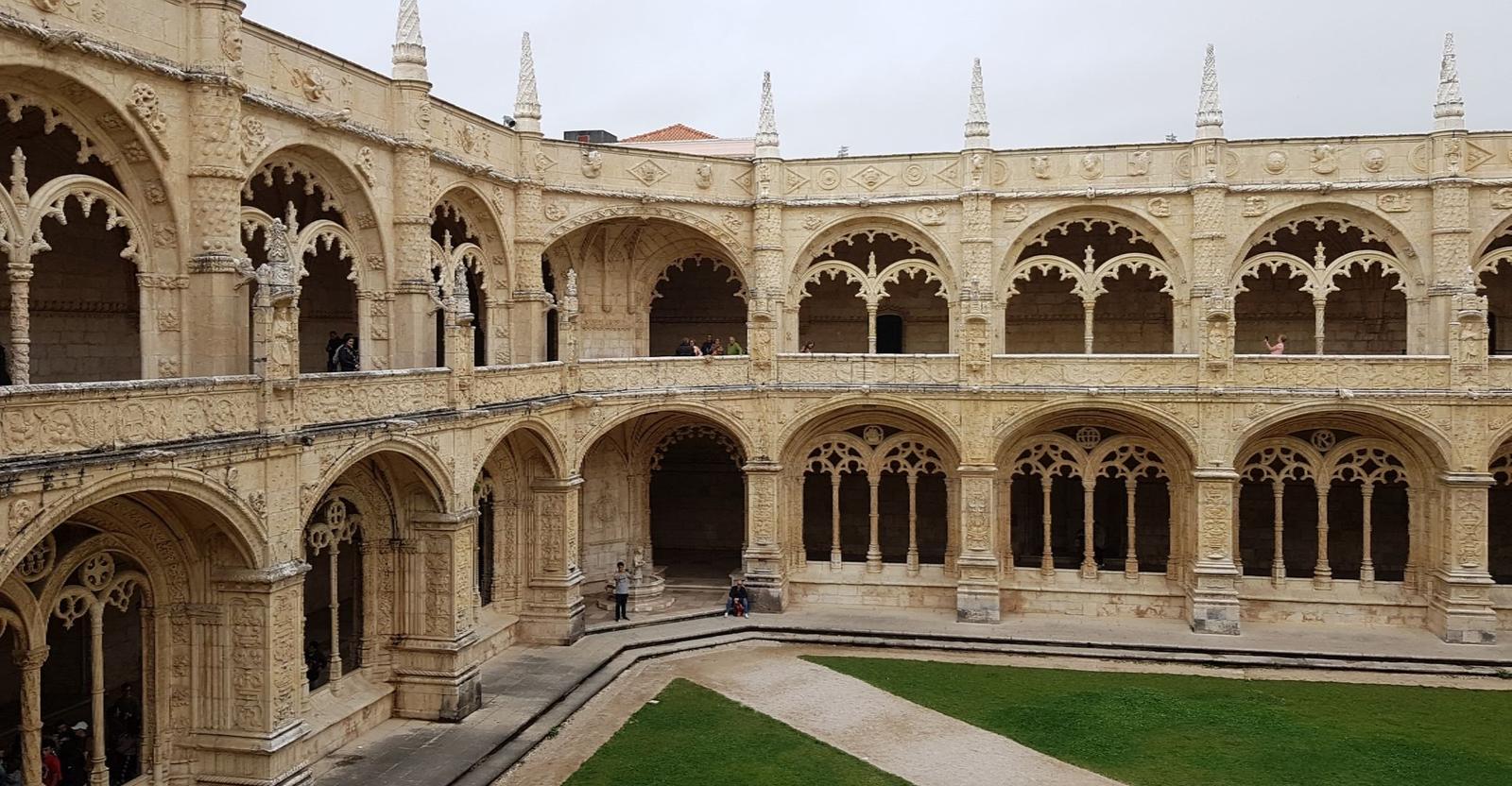
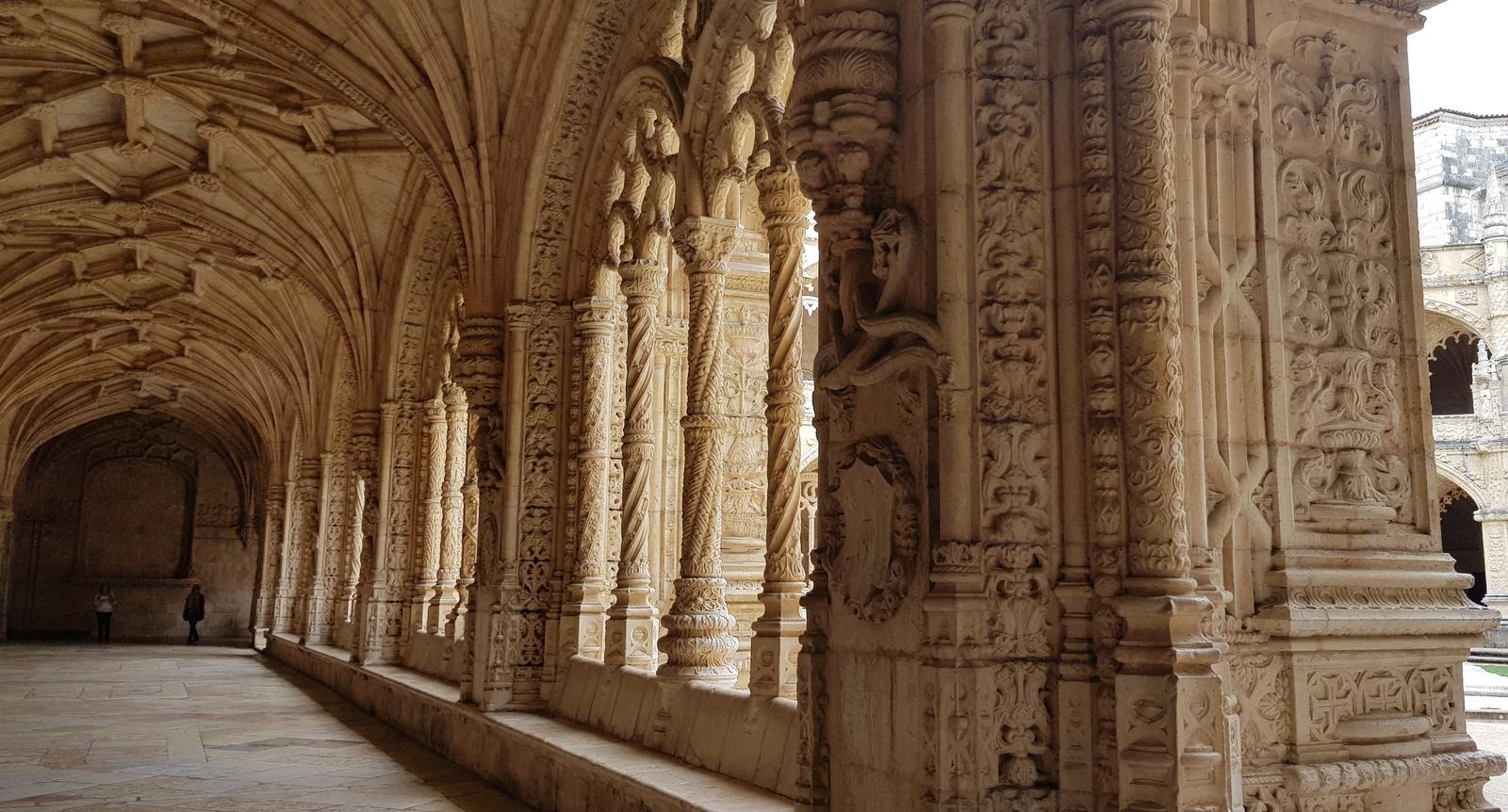
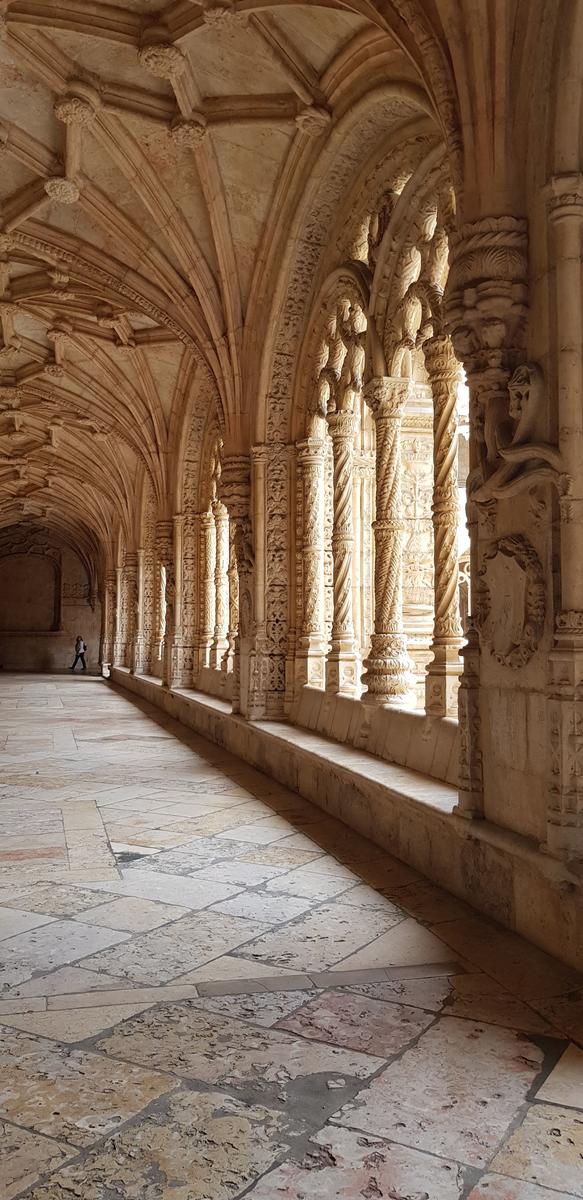
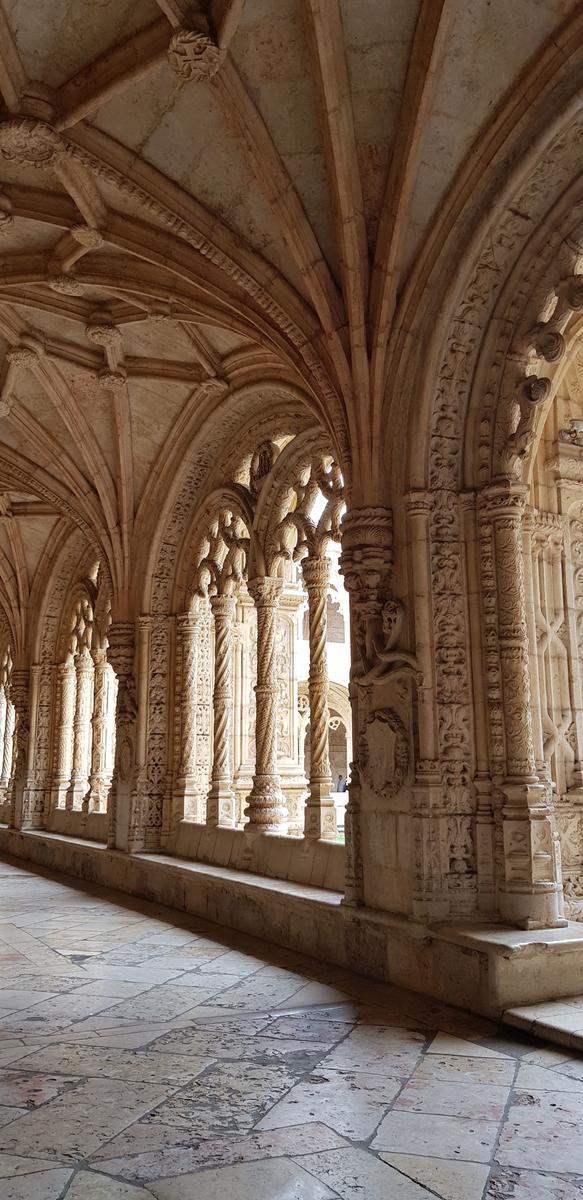
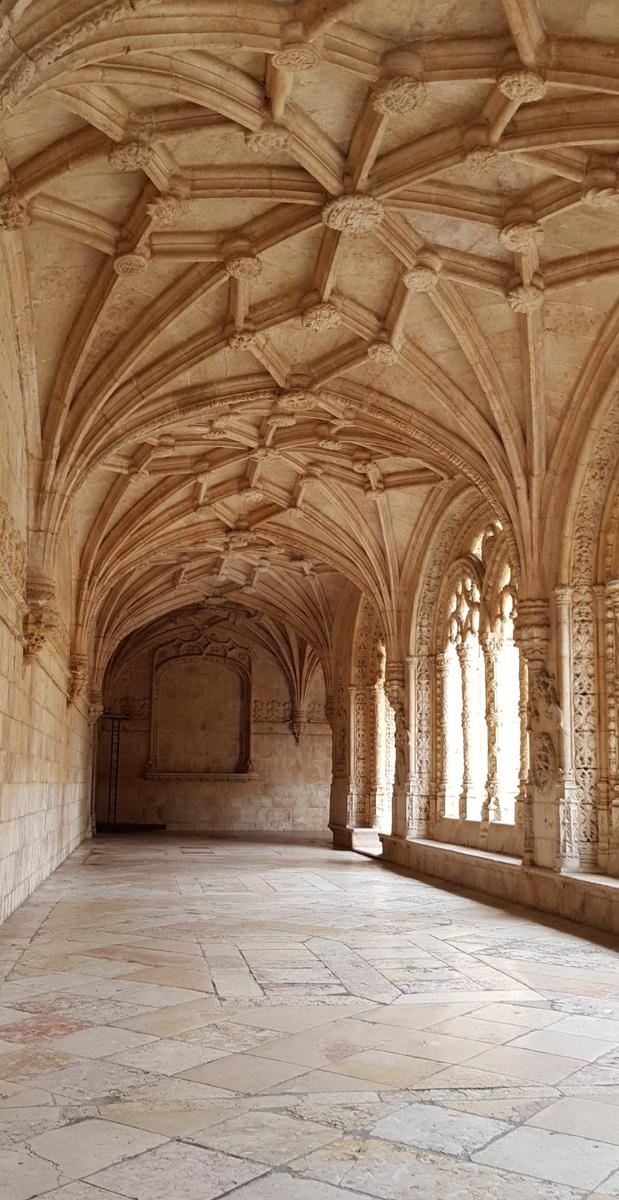
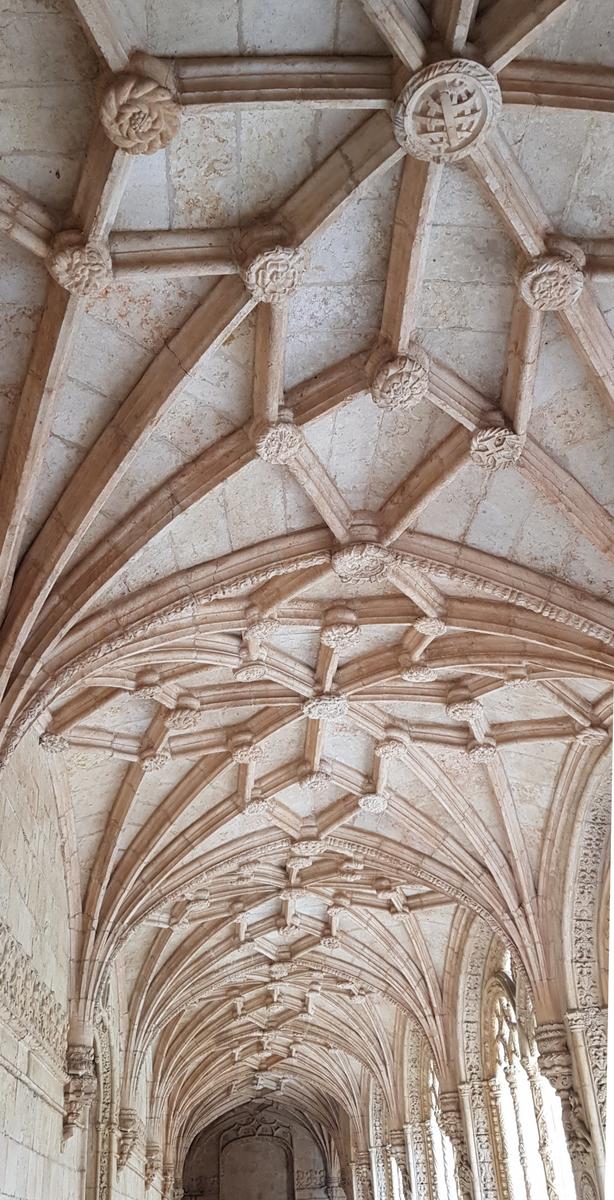
One image of the azulejos:
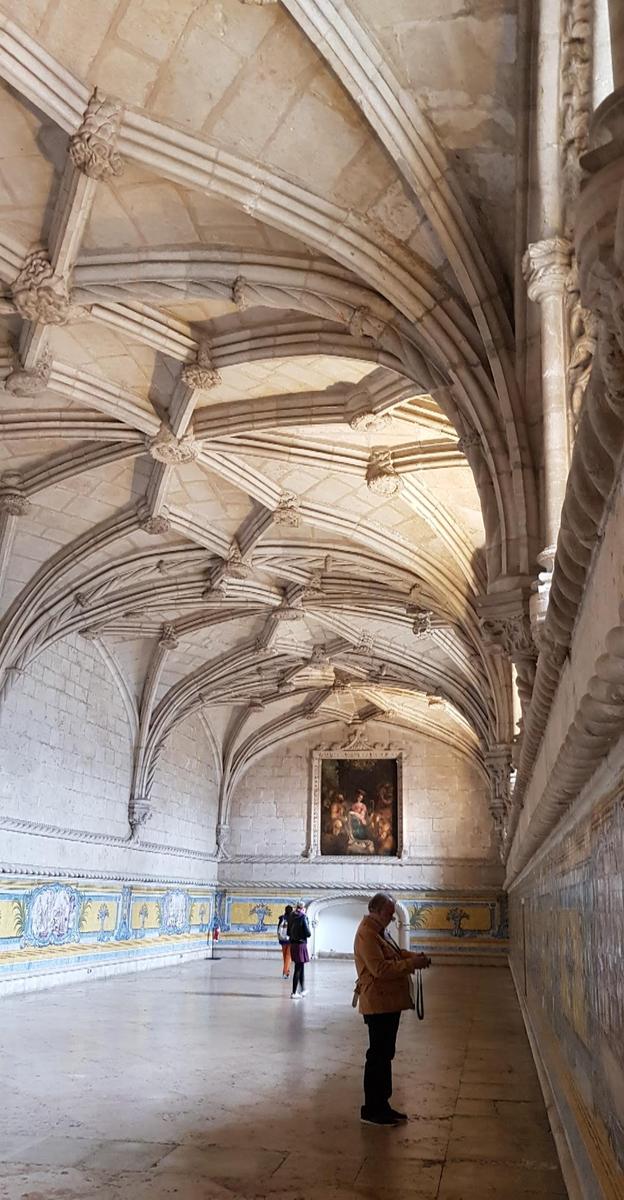
As you walk into the Monastery, you will pass the entrance to the St. Maria Belém Church on your right. I would highly recommend visiting this also. If I remember correctly you can only access the upstairs gallery at the back of the church from the Monastery using your ticket.
Here are a few photos from inside, taken from the upstairs Gallery:

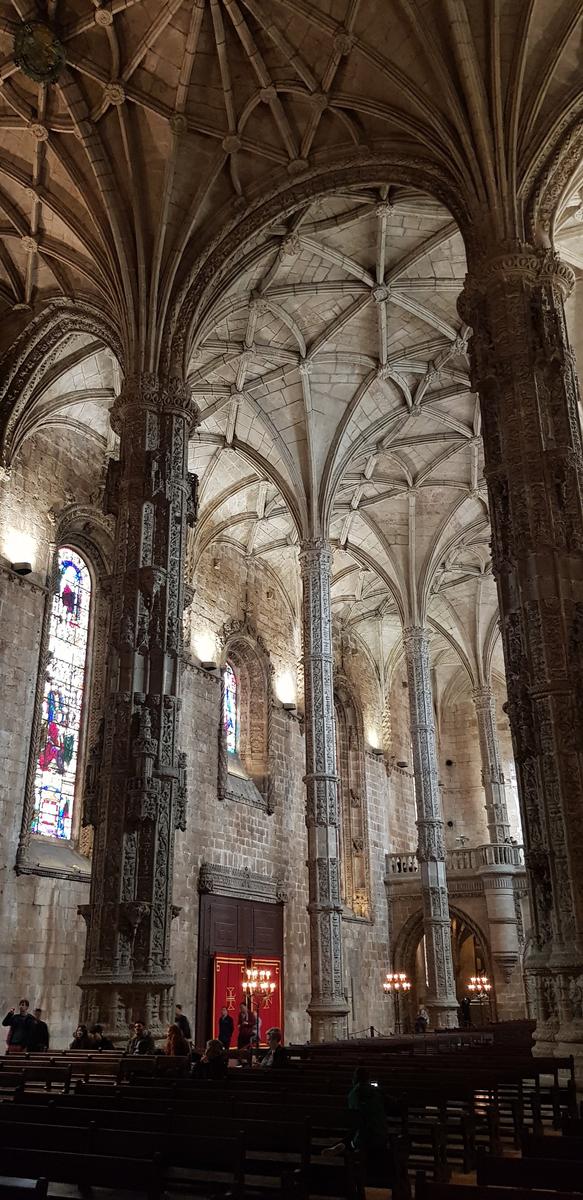
Looking backwards toward the entrance and the gallery overhead:
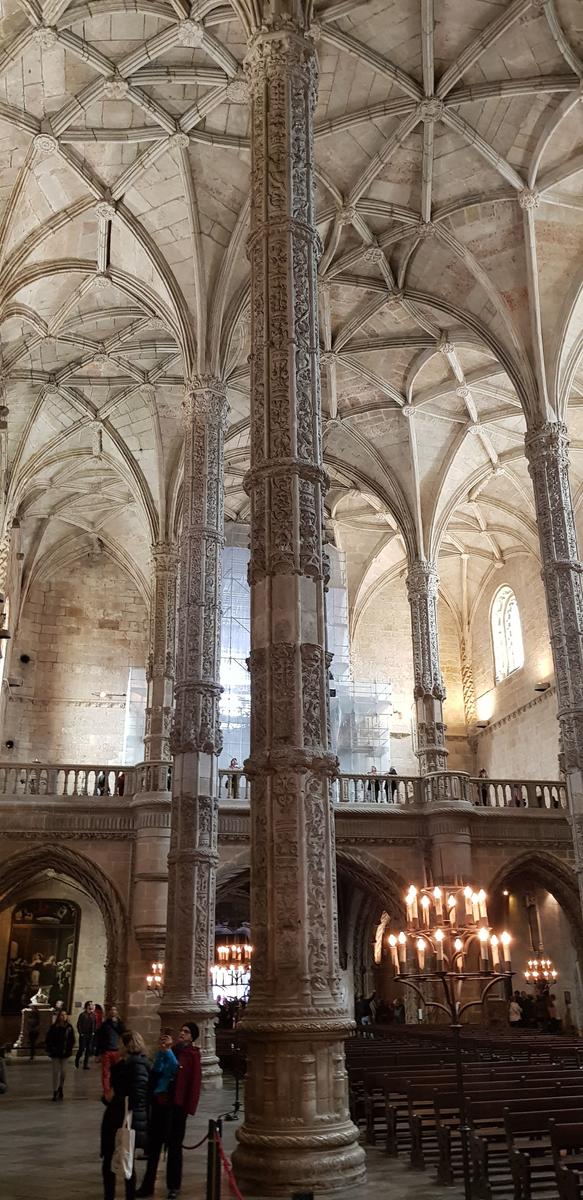
The exterior of the St Maria Belém Church is also so impressive:
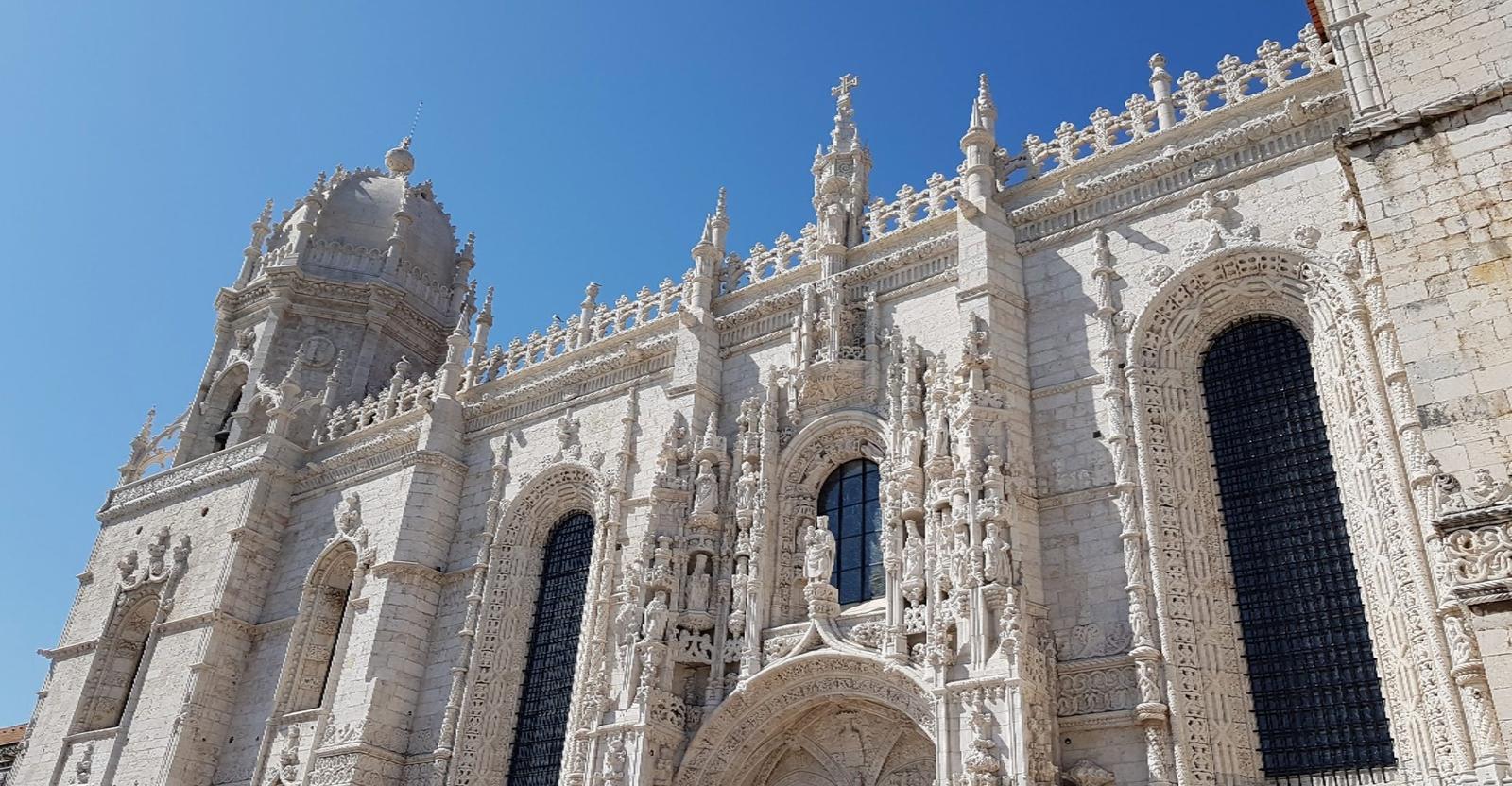
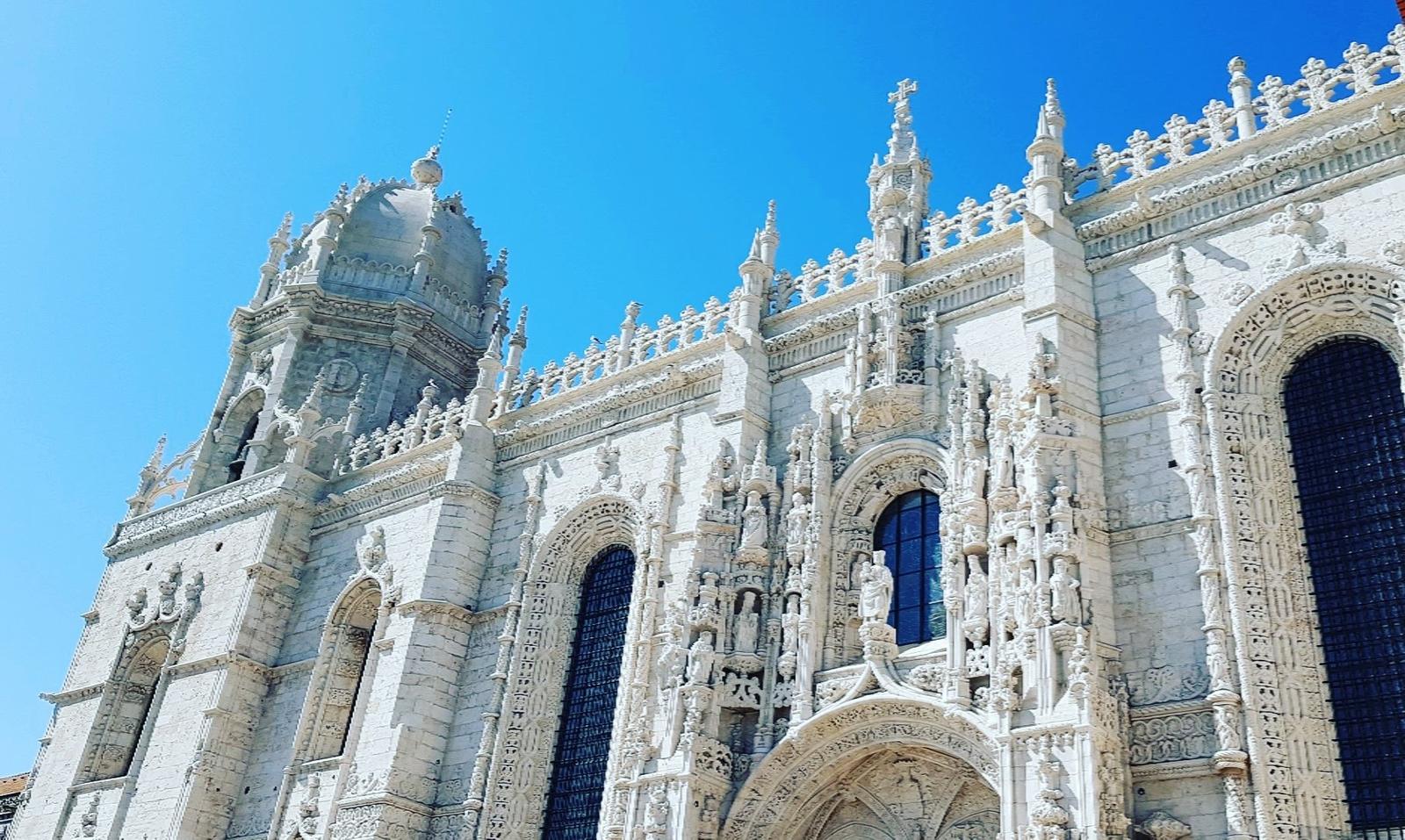
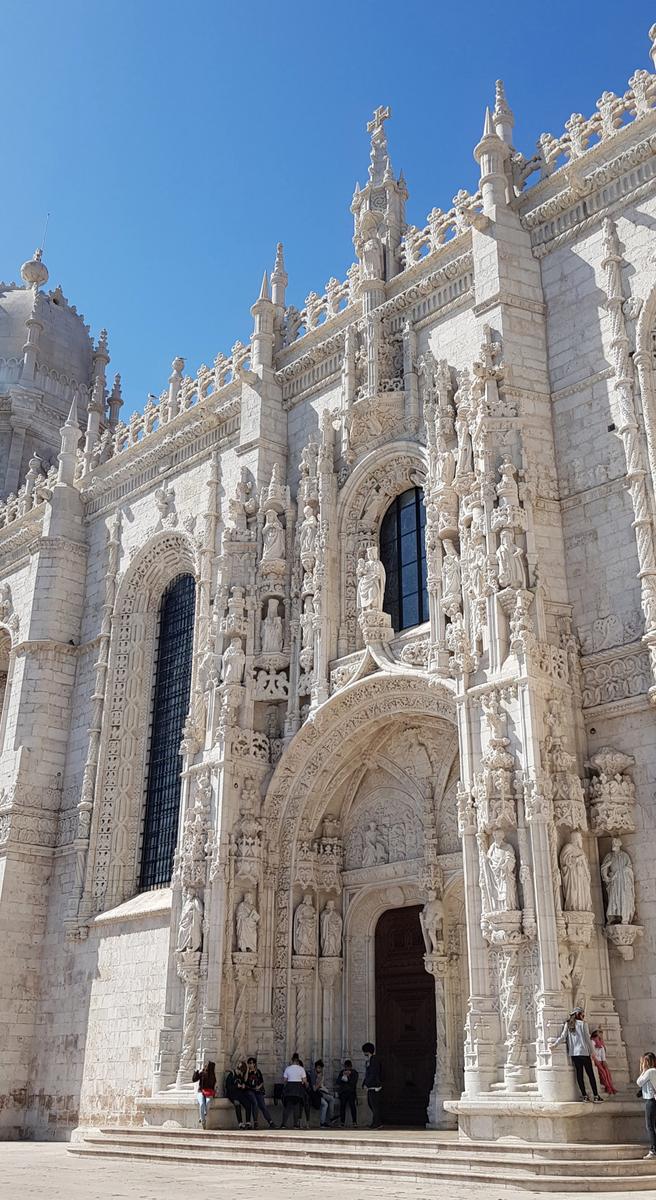
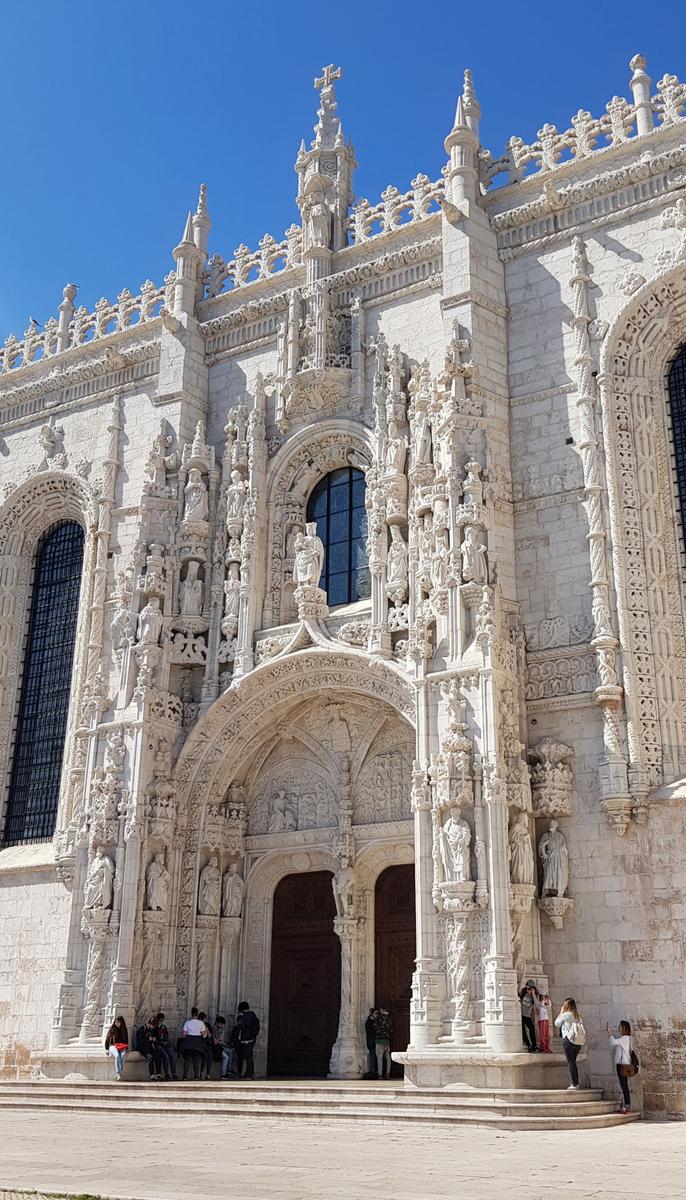
Opposite the Jerónimos Monastery there are three parks which are almost side by side and so it is easy to walk from one to the other.
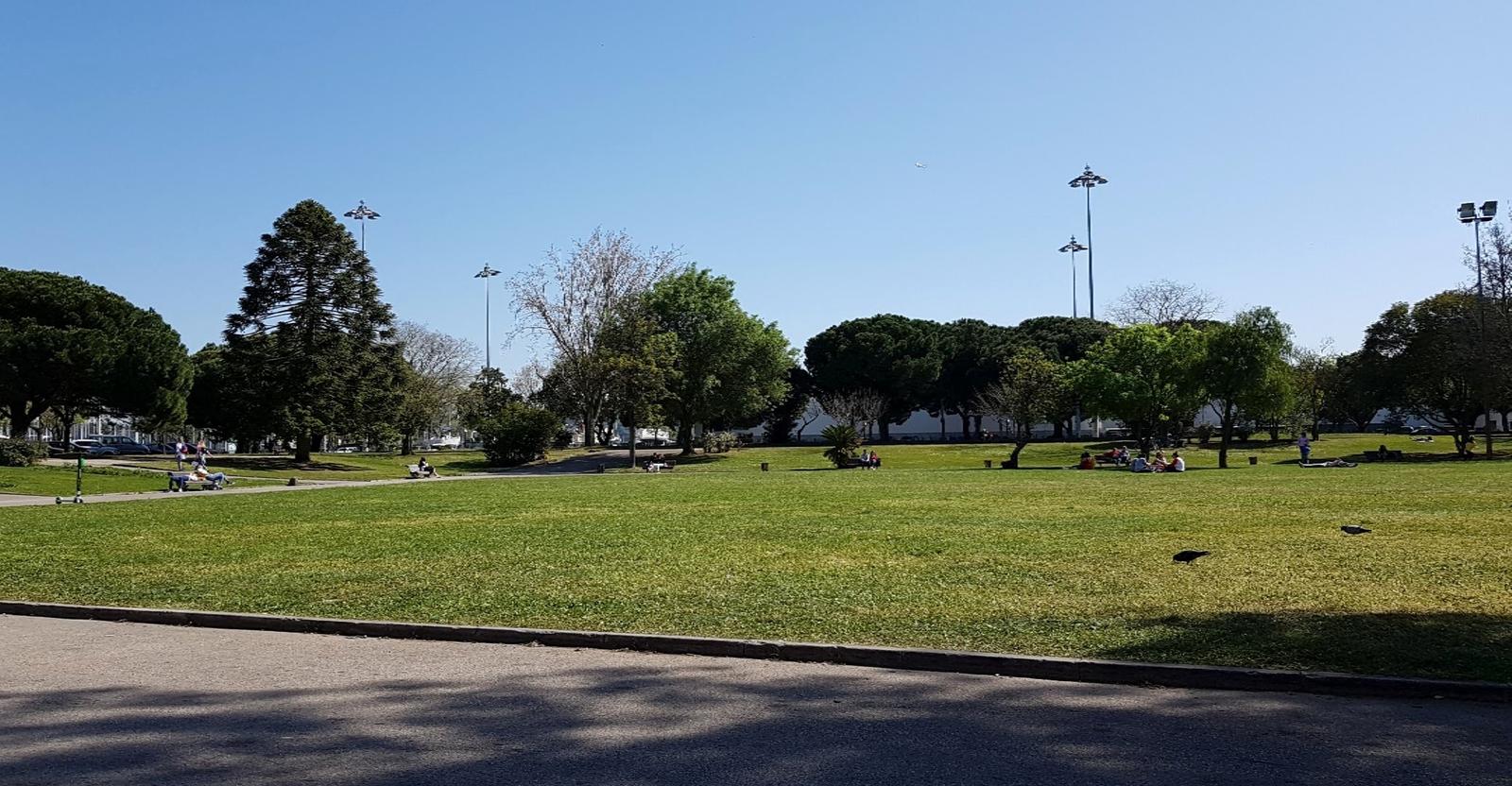
- Jardim Afonso de Albuquerque. You can read more about this here.
These parks make a great place to sit and relax, have a picnic or read a book.
The heart of Belém, it’s shops, cafes, bars and restaurants are mostly along Rua de Belém and the few narrow streets that surround this street (both sides of the road). It is in this area that you will also find the aforementioned famous Pastéis de Belém.
Can you find the duck? - The Painel de Azulejos - Silent Duck!
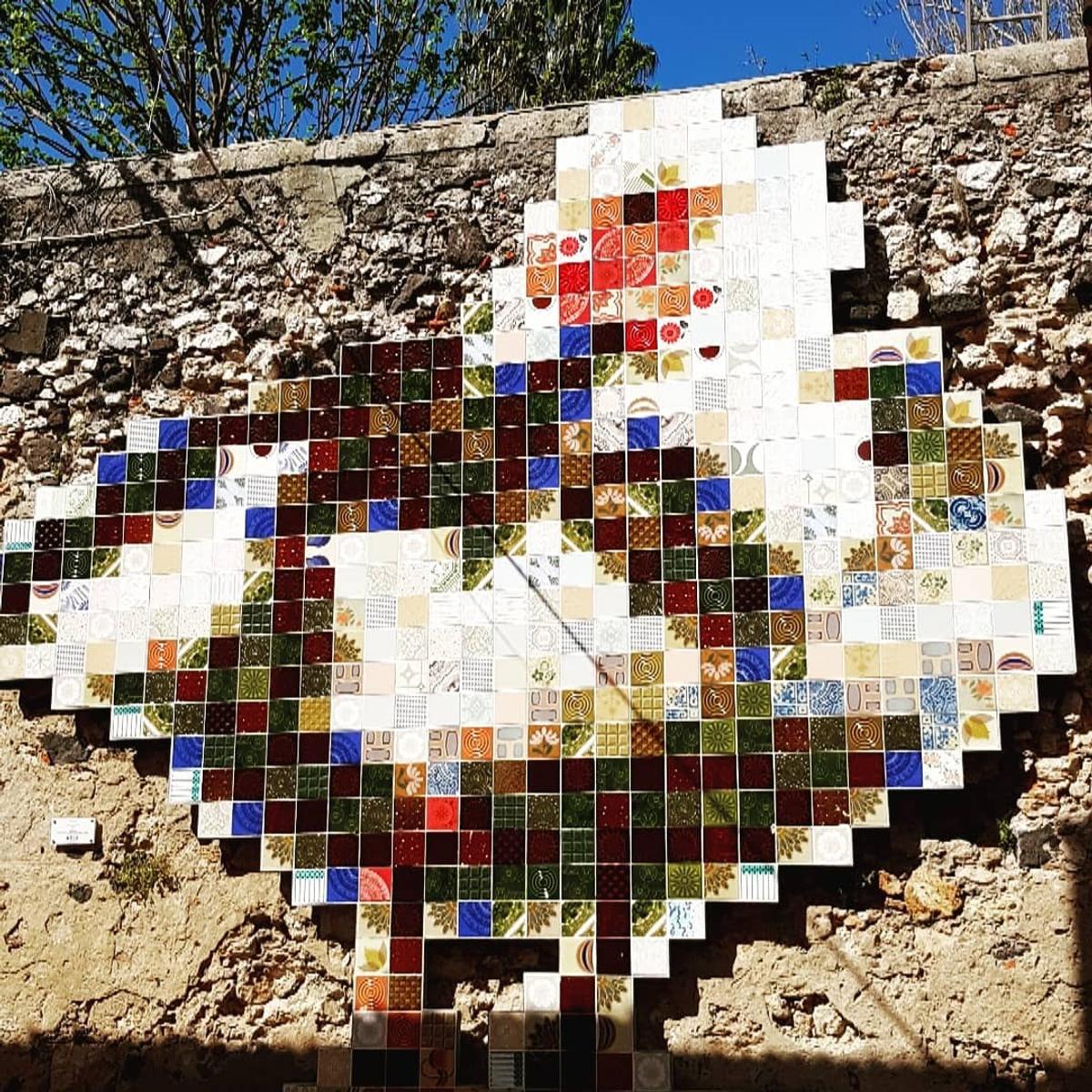
It is hidden up a narrow side street off Rua de Belém here.
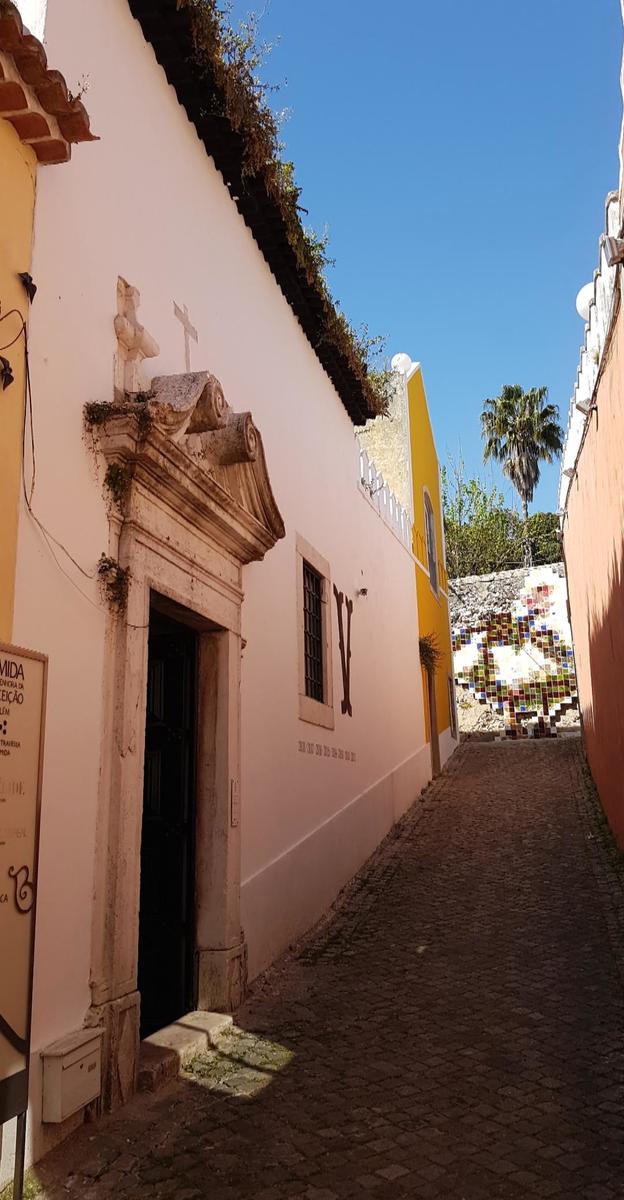
Also, along Rua Vieira Portuense, a pedestrian street, you will find many restaurants, cafes and bars with outdoor seating. These are a great place to people watch but of course can be a little bit more expensive due to their location. At this stage, I am sure you will be ready to sit and relax for a while.
Time to leave Belém?
When you are ready to leave Belém you will find taxis as well as bus and tram stops on Rua de Belém here. If you want to use Uber, you will have no issue finding one in the area.
I hope you found this guide to Belém useful!
NOTE: You could of course start your day in Belém centre, head straight there via public transport, Taxi or Uber from Lisbon centre. Start by seeing the centre, grabbing a coffee and one the famous Pasteis de Belém before visiting the Monastery. After that make your way to the Belém Tower and the rest of the attractions mentioned in this article, slowly making your way back towards Lisbon centre.
If you've any questions, suggestions or just want to say hello, contact me via the Contact Form, Instagram (@noroadlongenough) or By Email noroadlongenough1@gmail.com